The guide
by sunny
Li Cuppulati
San Teodoro
The guide
by sunny
Li Cuppulati
San Teodoro

Welcome
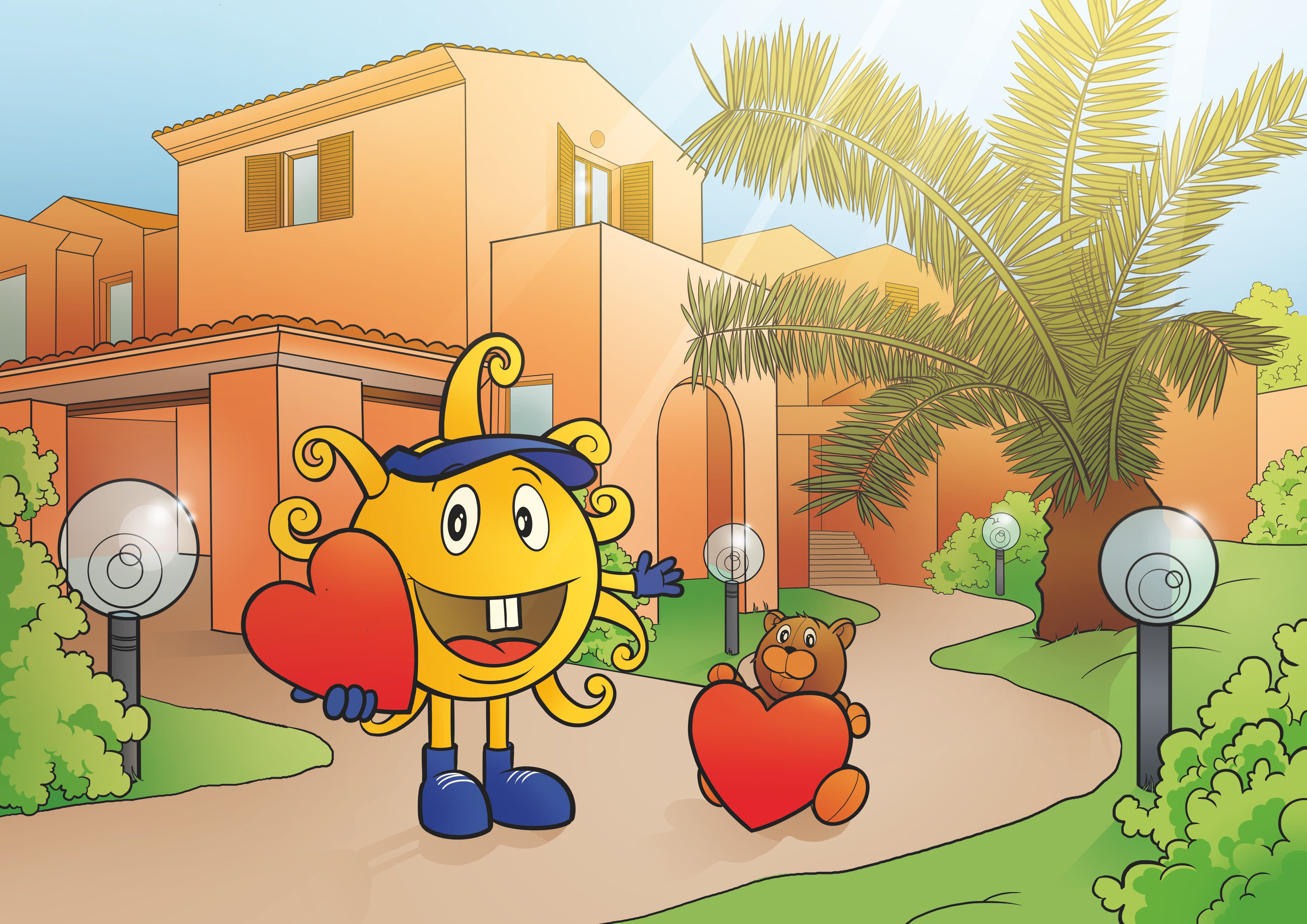 If you have any questions or concerns, you can contact the reception, send us a message, or give us a call. Our entire team will be happy to assist with anything you need. If you’re looking for recommendations on restaurants, beaches, or places to visit, don’t hesitate to ask — we’ll be more than happy to help!
If you have any questions or concerns, you can contact the reception, send us a message, or give us a call. Our entire team will be happy to assist with anything you need. If you’re looking for recommendations on restaurants, beaches, or places to visit, don’t hesitate to ask — we’ll be more than happy to help!
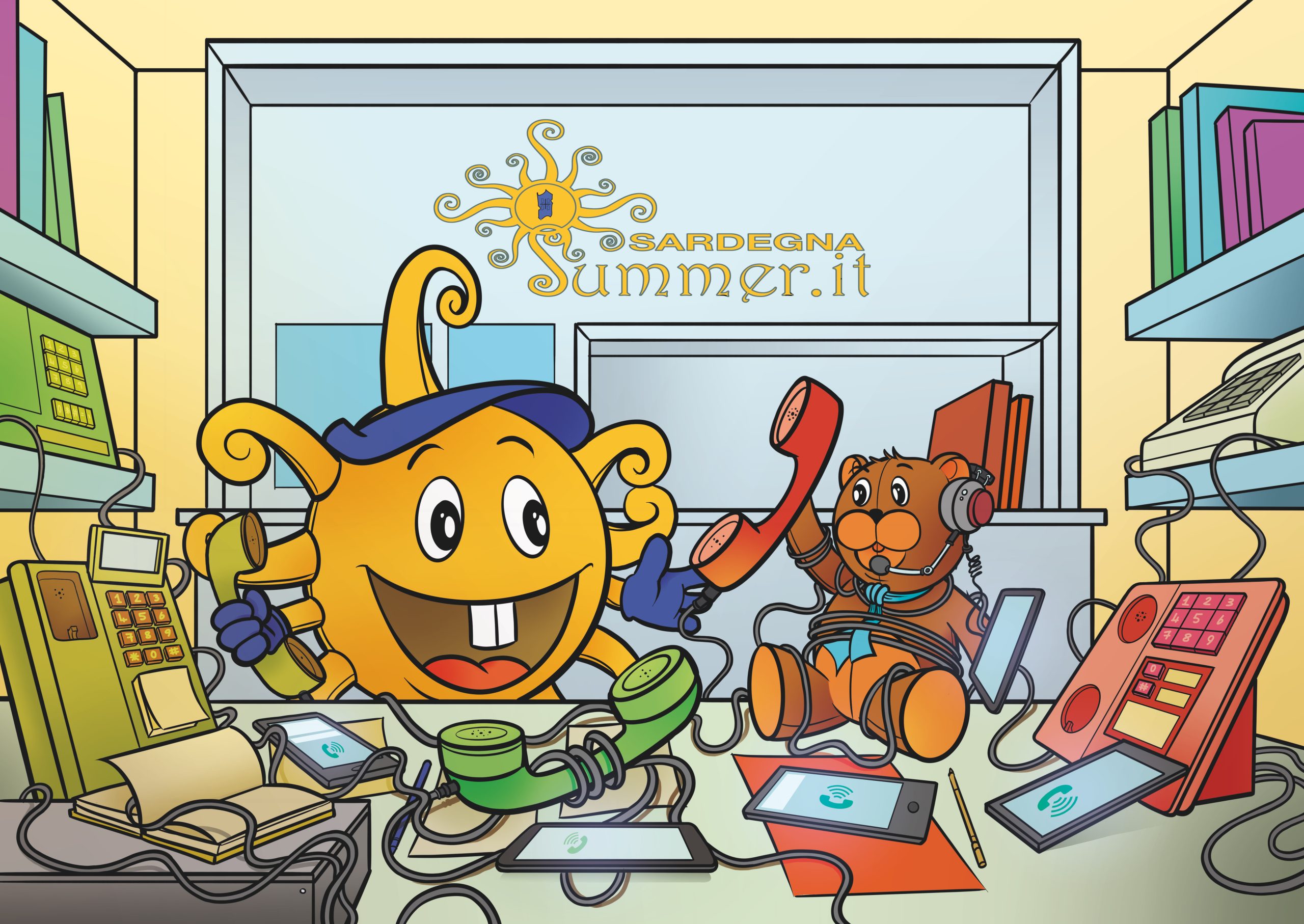
112 – General Emergency Number
113 – Police
115 – Fire Brigade
117 – Financial Police
118 – Medical Emergency
1515 – Environmental Emergencies
1530 – Coast Guard
0789 552076 – Tourist Medical Service in San Teodoro
 At SardegnaSummer Li Cuppulati, free Wi-Fi is available throughout the entire residence, allowing you to stay connected wherever you are on the premises. You’ll find the access password displayed inside your apartment. The strong wireless signal ensures reliable connectivity both in your apartment and in the shared areas, so you can check work emails, stay in touch with friends on social media, or find useful information to help plan your days out. And don’t forget to share your best holiday moments on Instagram using the tag @sardegnasummer and the hashtags #sardegnasummer #sardegnasummerlicuppulati
At SardegnaSummer Li Cuppulati, free Wi-Fi is available throughout the entire residence, allowing you to stay connected wherever you are on the premises. You’ll find the access password displayed inside your apartment. The strong wireless signal ensures reliable connectivity both in your apartment and in the shared areas, so you can check work emails, stay in touch with friends on social media, or find useful information to help plan your days out. And don’t forget to share your best holiday moments on Instagram using the tag @sardegnasummer and the hashtags #sardegnasummer #sardegnasummerlicuppulati
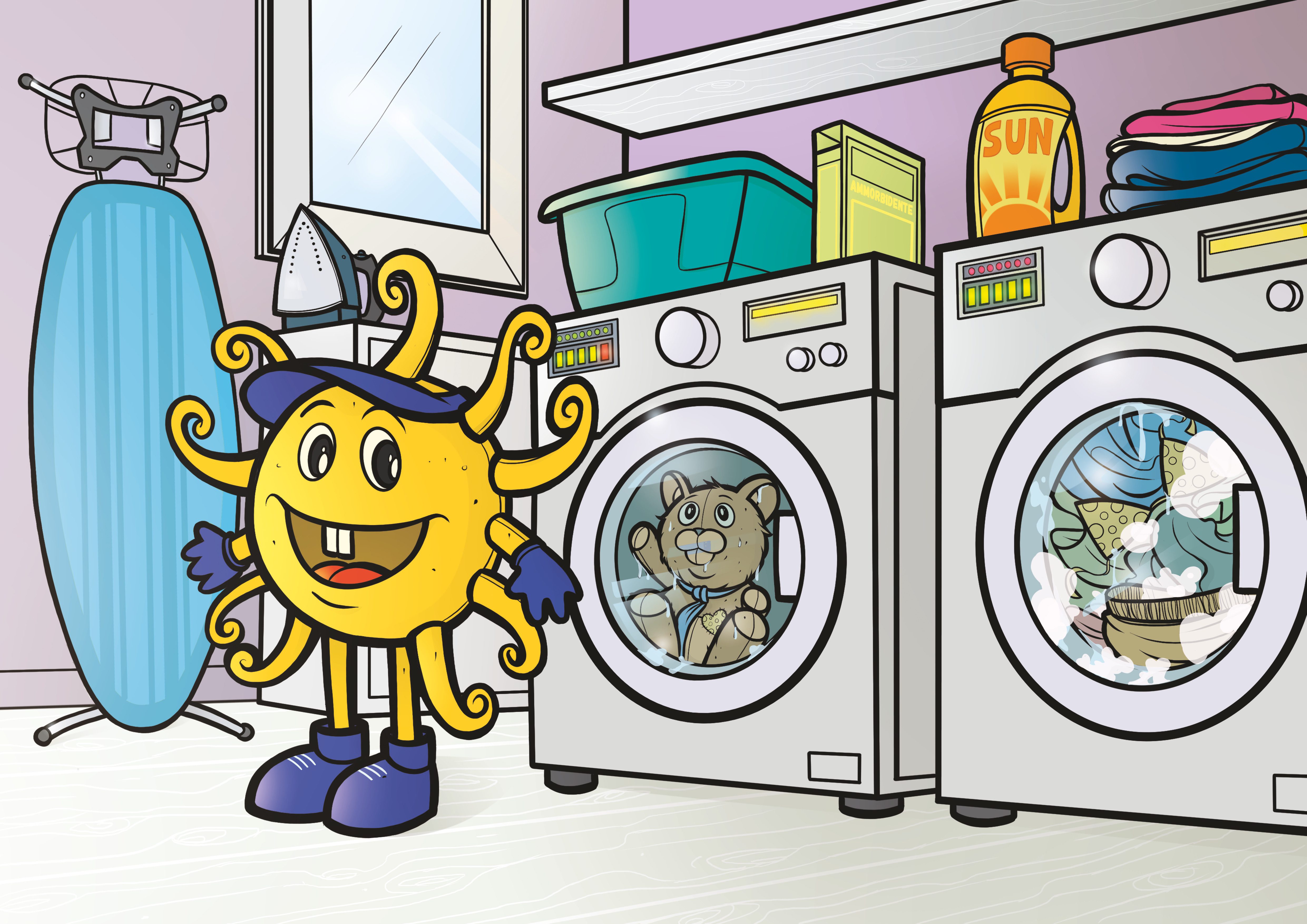 At the Li Cuppulati residence, we know how important it is to feel at home and to be able to enjoy the same comforts while on holiday, which is why we have provided laundry areas, which you can access with the VIOLA key in your bundle. Each laundry area is self-service and is equipped with an ironing board, iron and laundry basket. Should you need an iron and ironing board in your flat, do not hesitate to ask for them, we will be happy to provide them for you free of charge. Each laundry area is shared, so please, after each use, vacate it and leave it clean and tidy for the next guest to use.
At the Li Cuppulati residence, we know how important it is to feel at home and to be able to enjoy the same comforts while on holiday, which is why we have provided laundry areas, which you can access with the VIOLA key in your bundle. Each laundry area is self-service and is equipped with an ironing board, iron and laundry basket. Should you need an iron and ironing board in your flat, do not hesitate to ask for them, we will be happy to provide them for you free of charge. Each laundry area is shared, so please, after each use, vacate it and leave it clean and tidy for the next guest to use.
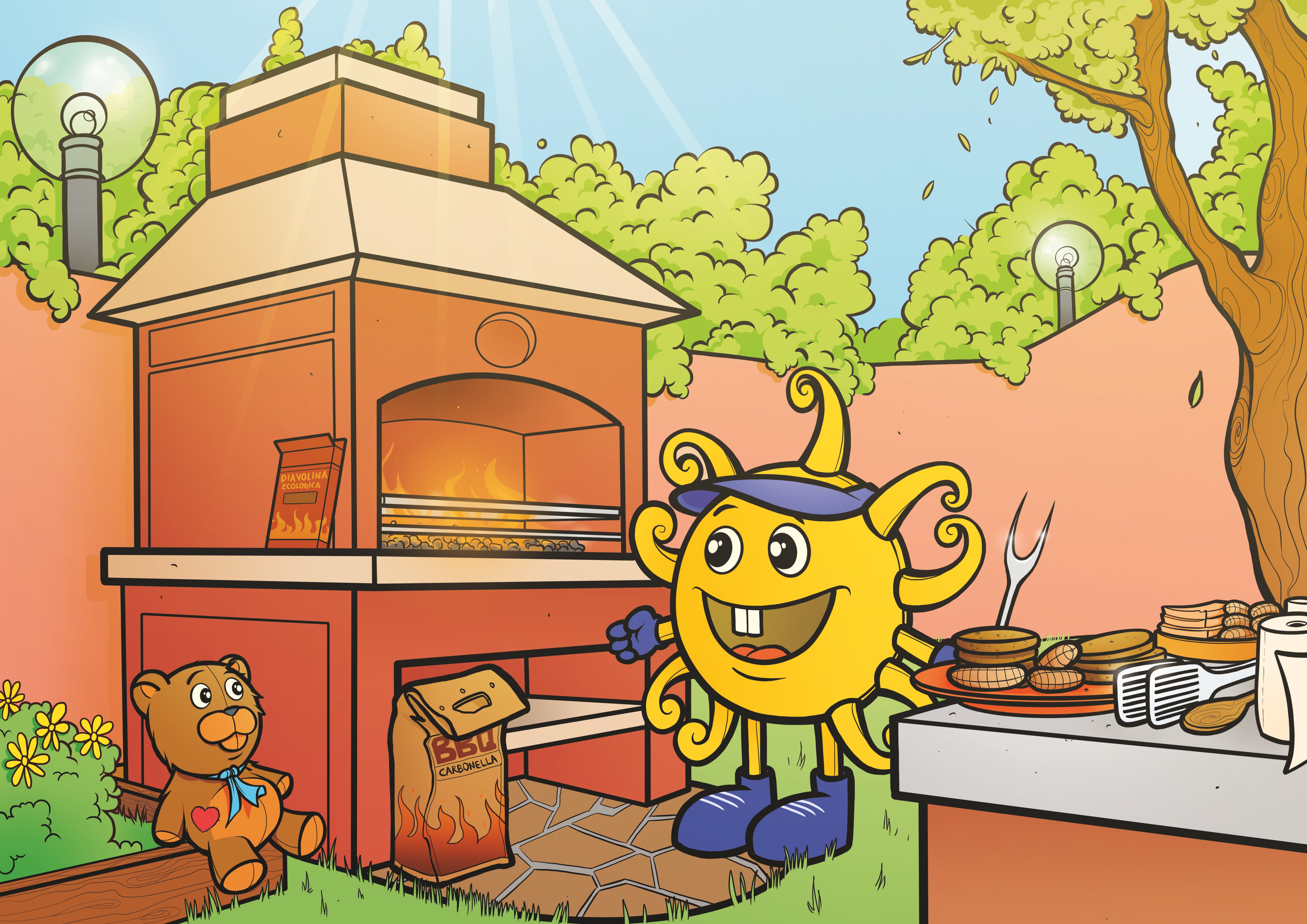 SardegnaSummer Li Cuppulati offers convenient barbecue areas where you can enjoy fantastic summer grills. If you prefer to have a barbecue in the privacy of your own veranda, just let us know — we’ll be happy to provide you with one free of charge. Please note that the barbecue areas are shared with other guests, so we kindly ask you to clean the grill and barbecue and dispose of any rubbish after use. For safety reasons, only charcoal is permitted — this helps prevent open flames and/or sparks.
SardegnaSummer Li Cuppulati offers convenient barbecue areas where you can enjoy fantastic summer grills. If you prefer to have a barbecue in the privacy of your own veranda, just let us know — we’ll be happy to provide you with one free of charge. Please note that the barbecue areas are shared with other guests, so we kindly ask you to clean the grill and barbecue and dispose of any rubbish after use. For safety reasons, only charcoal is permitted — this helps prevent open flames and/or sparks.
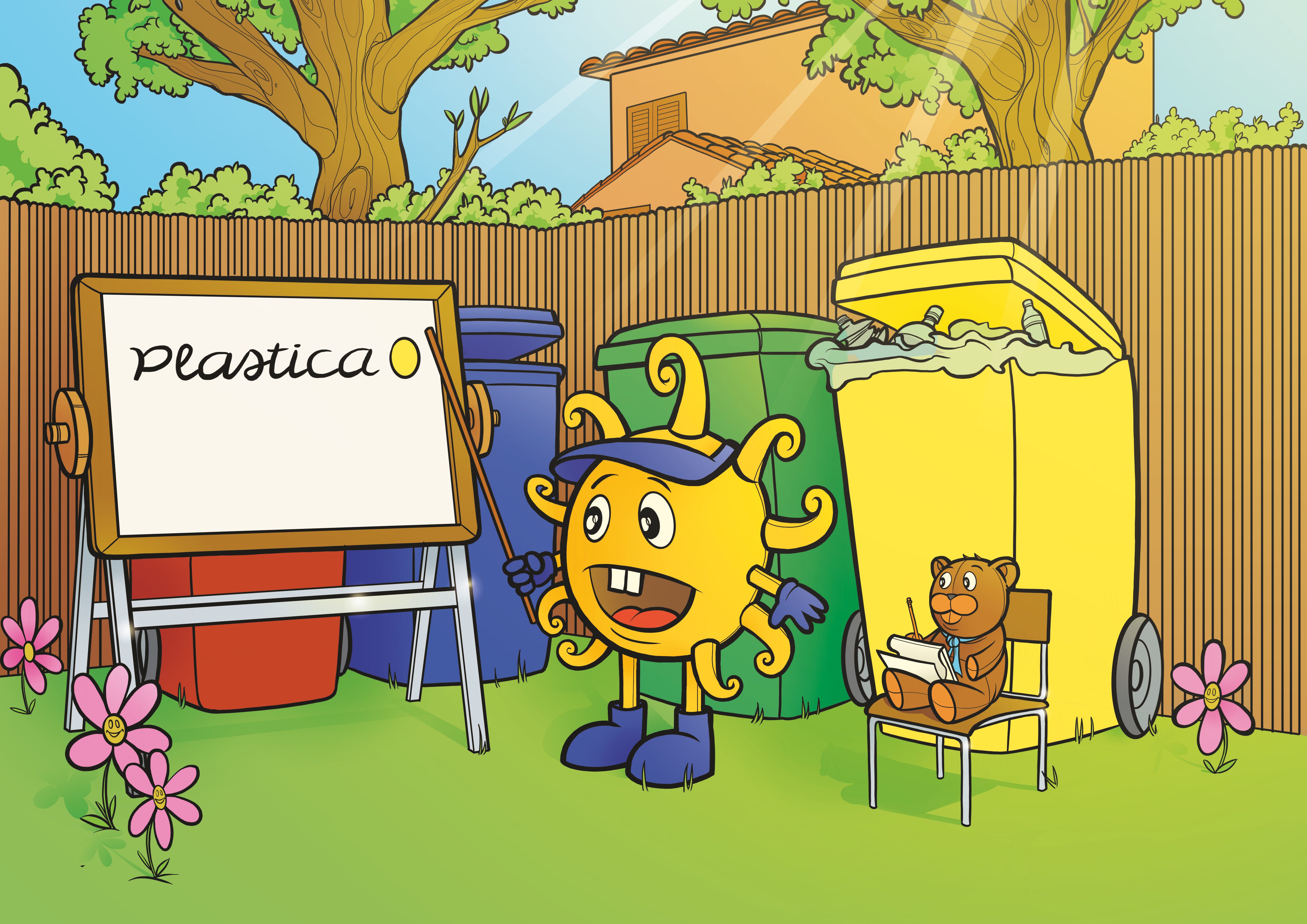 Proper Waste Management
Proper Waste Management
Proper waste management is essential to protect the environment, and at SardegnaSummer Li Cuppulati, we take our responsibility very seriously. We kindly ask for your cooperation in helping us preserve our unspoiled island. Please follow this simple guide to carry out proper waste sorting. Every bin in our apartments is clearly labelled to make waste separation easier. Each day, a staff member will collect your waste. Please follow the instructions below for correct sorting.
Organic Waste
What belongs here: kitchen scraps, food leftovers, spoiled food, dirty paper napkins, extinguished ashes, compostable espresso coffee pods, small plant trimmings.
Do NOT throw: nappies and sanitary pads, sanitary towels, cloths, sponges, chewing gum, cigarette butts.
How to dispose: waste will be collected daily from your apartment. Please place it in the designated bins on your veranda, using only compostable and biodegradable bags.
Non-recyclable Waste
What belongs here: nappies and sanitary pads, dirty cloths, sponges, toothbrushes, rubber items, cigarette butts, laminated paper, non-neon lightbulbs, ballpoint pens, razor blades, baking paper, coffee capsules.
Do NOT throw: recyclable waste.
How to dispose: waste will be collected daily from your apartment. Please place it in the designated bins on your veranda, using clear or transparent bags. Waste must not contain organic residues or hazardous substances.
Glass and Cans
What belongs here: glass packaging, bottles, jars, flasks (without metal lids), cans.
Do NOT throw: lightbulbs and neon lamps, glass sheets, crystals and mirrors, ceramic, porcelain, terracotta items, demijohns or bulky objects.
How to dispose: waste will be collected daily from your apartment. Please place it in the designated bins on your veranda, using clear or transparent bags. Containers must be emptied of all liquids and products.
Plastic
What belongs here: plastic packaging (even if dirty), bottles, detergent containers, disposable plates, cups and polystyrene, bags, trays, cling film.
Do NOT throw: broken toys, rubber items, plastic or metal pipes, ballpoint pens.
How to dispose: waste will be collected daily from your apartment. Please place it in the designated bins on your veranda, using a clear bag. Packaging must be free of organic residues or hazardous substances and should be crushed to reduce volume.
Paper and Cardboard
What belongs here: newspapers, paper and cardboard packaging, food and drink cartons, various sheets of paper.
Do NOT throw: laminated paper, baking paper, or any type of paper, cardboard or carton contaminated with paint or toxic products.
How to dispose: waste will be collected daily from your apartment. Please place it in the designated bins on your veranda, using clear or transparent bags. Cardboard and boxes should be folded to reduce volume.
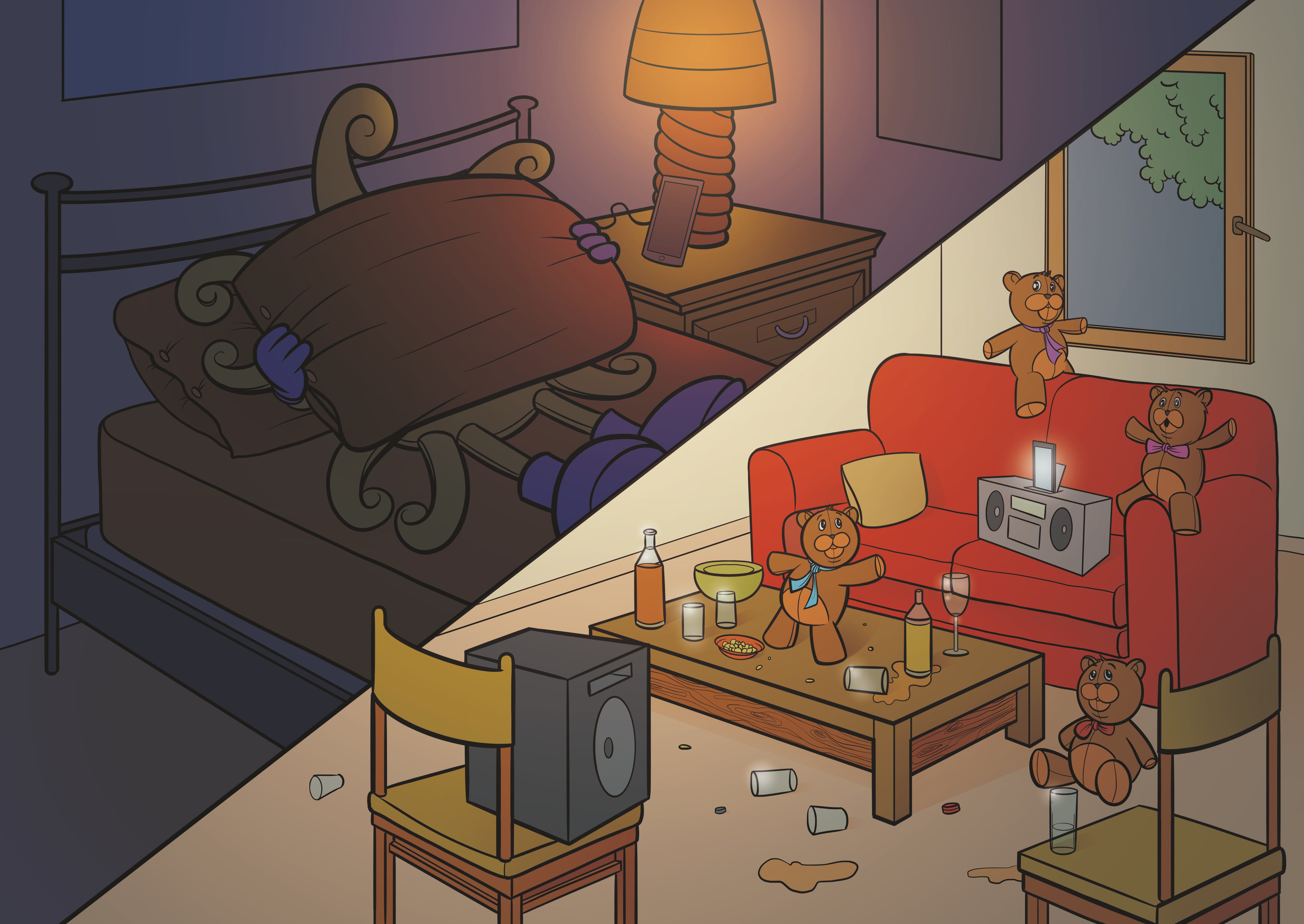 Our top priority is to ensure that your stay at SardegnaSummer Li Cuppulati is all about total relaxation, leaving you with lasting memories of a magical holiday nestled between the crystal-clear sea and the mountains. To help maintain a peaceful environment, we kindly ask you to respect the usual rules of communal living and to take care of the shared spaces, which have been thoughtfully furnished to welcome you and make you feel right at home.
Our top priority is to ensure that your stay at SardegnaSummer Li Cuppulati is all about total relaxation, leaving you with lasting memories of a magical holiday nestled between the crystal-clear sea and the mountains. To help maintain a peaceful environment, we kindly ask you to respect the usual rules of communal living and to take care of the shared spaces, which have been thoughtfully furnished to welcome you and make you feel right at home.

Your four-legged friend is not just allowed — they’re truly welcome! We’re sure they’ll love strolling around our residence. We kindly ask all pet owners to be considerate of other guests’ space and needs, to keep an eye on their pets, and to ensure common areas, including gardens, are kept clean from any mess. Please note that pets are not allowed in the pool and wellness areas. Thank you for your cooperation — here are some tips from our furry friends themselves:
Me and my owner
If I’m feeling a bit cheeky, cuddle me and remind me to behave politely. If I bark or whimper, it means I’m not feeling great. Take a moment to be with me — other guests might be disturbed, and we could be asked to leave because of my behaviour!
Good manners
I must always be on a leash and, if I’m particularly anxious or excitable, I need to wear a muzzle. I should always be accompanied by someone who can manage my energy and strength. And if I make a mess? Please clean it up — I can’t do it myself! This goes for the lawn too. You must collect and properly dispose of anything I leave behind. Don’t let me embarrass you!
Did you know I can come to the beach with you too?
Yes, we have our own dedicated beach: Costa Caddu! Just remember that I must be kept on a lead from the car park to the beach. Don’t forget to bring all my health documents: proof of vaccinations and a health certificate issued by my vet no more than 30 days ago. I must also wear a flea collar and, if I’m coming from abroad, I need to have had a rabies vaccination. Bring my water bowl and a sun umbrella too – I don’t want to overheat! And if I need the toilet? You must pick it up straight away and dispose of it in the appropriate bins.
To get to Costa Caddu, follow the signs for Isuledda beach, taking the paved road all the way to the end, then continue along the dirt road until you reach the car park.
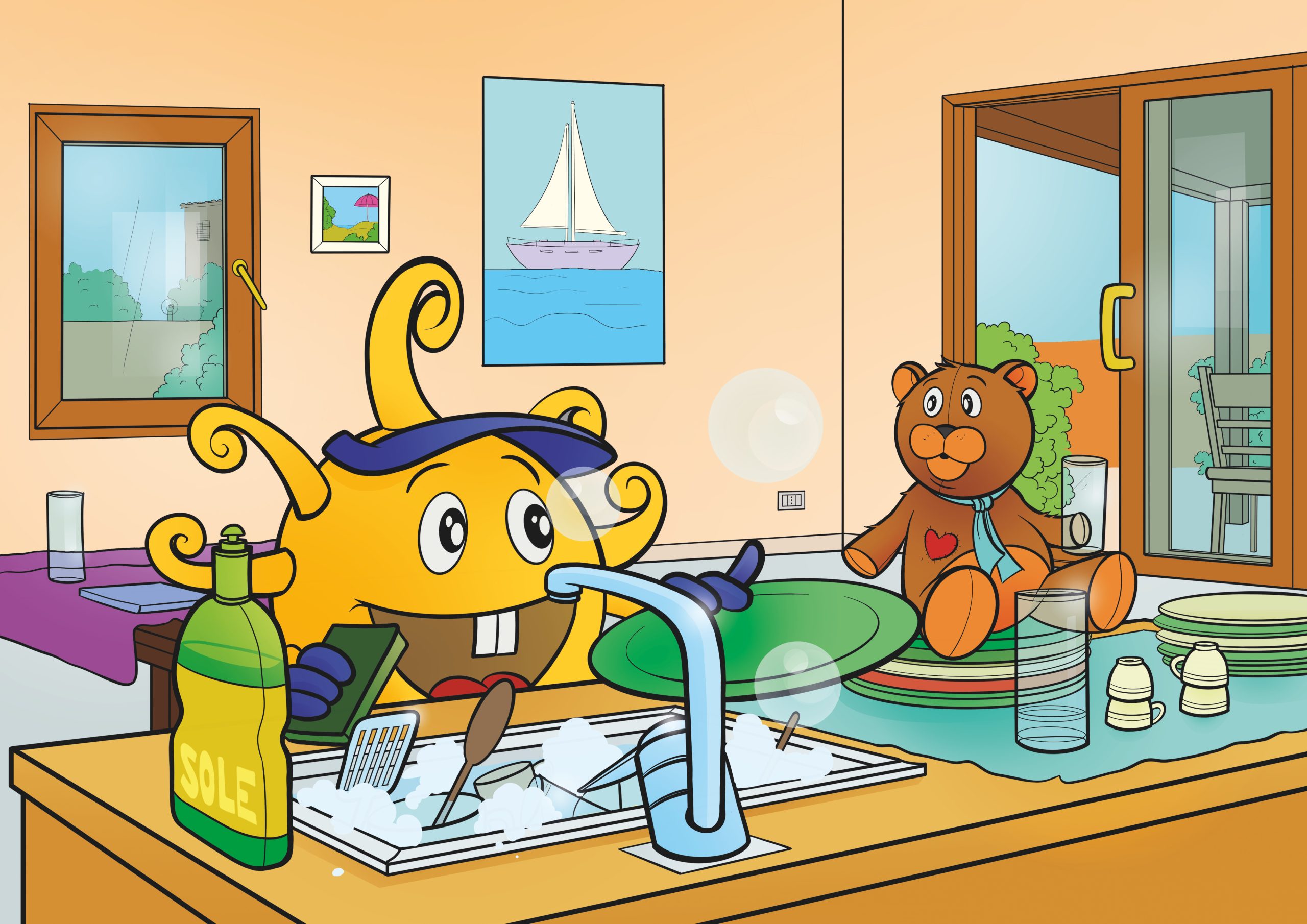 Your comfort is our priority. That is why we will also try to accommodate your requests during check-out. Should transport schedules hinder you, please do not hesitate to let us know. We will do everything we can to ensure that you enjoy your last day to the full. When returning the flat, we ask you to leave the dishes, cutlery and stove clean. Should there be any damage to the flat during your stay, please let us know and we will certainly find a compromise. Thank you for your attention and cooperation!
Your comfort is our priority. That is why we will also try to accommodate your requests during check-out. Should transport schedules hinder you, please do not hesitate to let us know. We will do everything we can to ensure that you enjoy your last day to the full. When returning the flat, we ask you to leave the dishes, cutlery and stove clean. Should there be any damage to the flat during your stay, please let us know and we will certainly find a compromise. Thank you for your attention and cooperation!
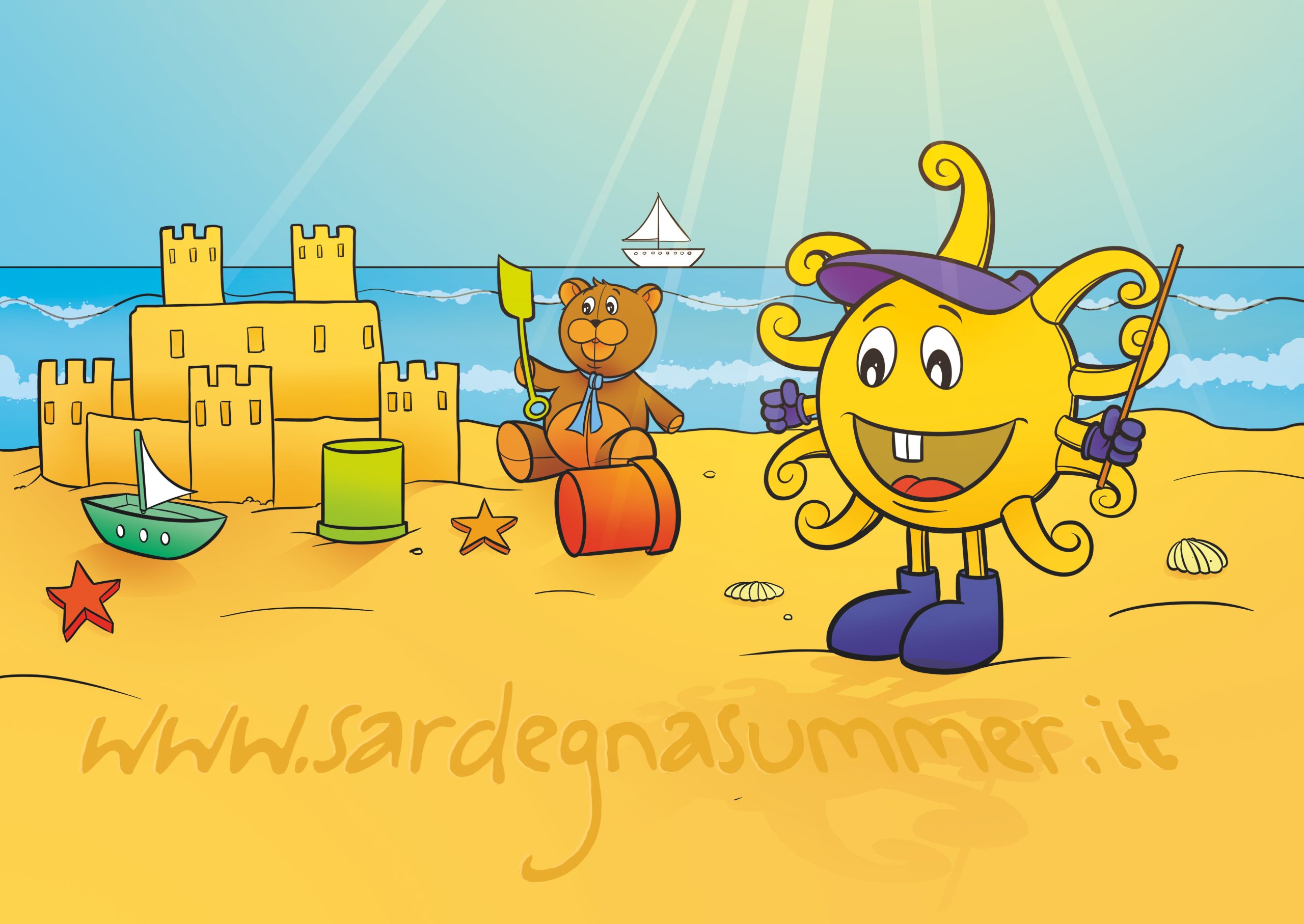
Sardinia is undeniably one of the most sought-after summer destinations, boasting long stretches of unspoiled coastline and crystal-clear waters. San Teodoro is home to some of the island’s most beautiful beaches: endless expanses of fine white sand alternate with granite cliffs, concealing small coves embraced by wild nature, infused with the unmistakable scents of myrtle, juniper and helichrysum. The Municipality of San Teodoro, together with Olbia and Loiri-Porto San Paolo, forms part of the Tavolara and Capo Coda Cavallo Marine Protected Area. This protected area starts at Capo Ceraso and extends to Cala Finocchi, south of San Teodoro, also including the islands of Molara and Molarotto. The aim is to preserve landscapes of rare beauty, stretching over 40 km of coastline rich in ponds and lagoons where colonies of significant seabirds nest: the golden eagle in Tavolara, the European shag, the Yelkouan shearwater and the more famous pink flamingos in the San Teodoro lagoon. But the real treasure of the Marine Protected Area lies beneath the sapphire-blue sea, teeming with marine life and vibrant coral and gorgonian reefs. To fully enjoy the beauty of these waters, here are some of the most captivating beaches to discover.
La Cinta
La Cinta is undoubtedly the most famous and scenic beach in San Teodoro. It stretches along a strip of coastline with ultra-fine white sand, about 5 km long, perfect for long walks. The shallow sandy seabed makes it ideal for children. Just behind the beach is a line of dunes dotted with juniper, sea lilies, and helichrysum. The large San Teodoro lagoon behind it is a natural habitat for hundreds of pink flamingos, an integral part of the ecosystem. The beach is well equipped and offers many recreational options. There is a large car park, several beach bars, a restaurant, and numerous beach clubs where you can rent umbrellas and sun loungers. Water sports enthusiasts will find the Kite Zone halfway along the beach—a dedicated area for kitesurfing.
How to get to La Cinta from our residence — Distance: 2 km
By car: With the residence behind you, turn left, then right onto via Li Fureddi until you reach the junction with the SS125. Turn right and, after 400 metres, at the roundabout, turn right again and continue for about 1 km to the beach. On foot or by bike: With the residence behind you, take via Li Fureddi and walk to the Il Giardinaccio restaurant (about 800 metres), turn left, cross the bridge and take the first left onto via Gramsci, follow it all the way to the beach. By Teodorino Train: Another option is the small road train, which stops near the entrance of our residence.
L’Isuledda
This is a stunning beach with white, powdery sand, surrounded by charming dunes, fragrant shrubs, and ancient junipers. A real gem located south of San Teodoro, near a lagoon, lapped by a sea with endless shades of blue and shallow waters.
How to get to L’Isuledda from our residence — Distance: 6 km
With the residence behind you, turn left, then right onto via Li Fureddi until you reach the SS125 junction. Turn left and after about 2 km, at the roundabout take the third exit onto the SP1. Follow the SP1 and after 2.3 km, turn left following the signs to the beach.
Puntaldìa
Heading north, you’ll find the enchanting Puntaldìa beach, adjacent to La Cinta and easily reachable on foot from there by crossing the small estuary of the San Teodoro lagoon. The beach is well sheltered from northern winds and features medium-grained white sand. The water is clear, with hues ranging from green to turquoise, and the seabed is mainly sandy, except for some rocks at the southern end.
How to get to Puntaldìa from our residence — Distance: 8 km
With the residence behind you, turn left, then right onto via Li Fureddi until you reach the junction with the SS125. Turn right and drive about 5 km towards Olbia, then turn right at the Lu Fraili junction following signs to “Punta Aldìa”. After about 1.5 km turn right onto via di L’Aldìa, then left after 200 metres. Continue straight to a roundabout, take the first exit, and drive another 500 metres to reach the beach.
Lu Impostu
Just after the Punta Aldia headland and before the more famous Cala Brandinchi beach lies Lu Impostu: a 1 km-long arc of dazzling white sand nestled between a lagoon and the turquoise sea. Wild nature and the Tavolara island backdrop create an unrivalled spectacle. The beach is fully equipped and ideal for children due to calm waters and shallow seabeds. From the northern end, you can walk to Cala Brandinchi.
How to get to Lu Impostu from our residence — Distance: 9 km
With the residence behind you, turn left, then right onto via Li Fureddi until the SS125 junction. Turn right and head 4.5 km towards Olbia, then turn right at the Lu Impostu – Puntaldìa sign. Continue straight for 2 km to reach the beach car park.
Cala Brandinchi
A holiday in San Teodoro wouldn’t be complete without visiting the paradise of Cala Brandinchi. This beach has dazzling white sand, soft dunes covered in lush vegetation, a lagoon and a pine forest behind. Known as “Little Tahiti” for its colours, the beach features a large car and camper park, a bar with umbrella and sunbed rentals, and a small jetty for mooring small boats. Cala Brandinchi is perfect for a memorable holiday.
How to get to Cala Brandinchi from our residence — Distance: 9 km
With the residence behind you, turn right onto via la Canna, then left until you reach the SS125. Turn right and take the second exit at the roundabout. After about 5.5 km, past Lu Fraili, turn right following the signs to Capo Coda Cavallo – Cala Brandinchi. After 1 km on a straight road, the entrance to the paid car park will be on your right.
Restricted access in high season to Lu Impostu and Cala Brandinchi beaches
Due to popularity and overcrowding, access is restricted from 15/06 to 15/09 to protect the environment. Booking is required via the “San Teodoro Spiagge” App (Play Store, App Store).
Capo Coda Cavallo
About 700 metres long, the beach at Capo Coda Cavallo is surrounded by dense Mediterranean scrub, highlighted by the contrast of ivory sand and turquoise waters, usually calm due to its sheltered position. The seabed is sandy and gradually slopes down. Don’t miss the famous viewpoint by following signs to the Est village for a breathtaking view of Proratora, Molara, and Tavolara islands. The beach offers a bar, restaurant, and rentals for umbrellas and boats.
How to get to Capo Coda Cavallo from our residence — Distance: 12.6 km
With the residence behind you, turn right onto via la Canna, then left until you rejoin the SS125. Turn right and take the second exit at the roundabout. After about 5.5 km, turn right following signs to Capo Coda Cavallo. Drive for about 5 km following signs to Punta Est village, then take a dirt road on the left after a gate; drive another 1 km to the beach car park.
Cala Suaraccia
Located on the Capo Coda Cavallo headland within the Marine Protected Area, this small cove of granite sand is breathtaking. Overlooking the islands of Tavolara and Molara, its clear waters reveal the seabed, and the nearby pinewood provides shelter from the midday heat. The beach is equipped with basic facilities and a small refreshment area.
How to get to Cala Suaraccia from our residence — Distance: 11.3 km
Follow the same directions as for Capo Coda Cavallo but stop when you see the Le Farfalle village. Immediately after, on your left, is a large paid car park leading to the beach.
Cala Girgolu (or Cala Ghjlgólu)
The beautiful Cala Girgolu (Cala Ghjlgólu in Gallurese) lies within a cove at the base of the Monte Petrosu promontory. This stretch of coast features tiny bays and inlets, often accessible only by boat. You may see pink granite rocks sculpted by the elements, like the once-famous “Turtle” (now gone) and the “Rooster of Gallura”. Small paths connect hidden coves with Tavolara island as a backdrop. Shallow waters make it ideal for children.
Spiaggia delle Vacche and the Flat Rocks (Sassi Piatti)
Heading from Cala Girgolu towards Punta Monte Pedrosu, you’ll reach the famous Sassi Piatti—granite rocks shaped by sea and wind. Getting here involves walking about 600 metres through rocky terrain and Mediterranean scrub. Along the way, enjoy hidden coves, sculpted rocks, and ancient junipers. We recommend wearing comfortable shoes due to the rugged path.
How to get to Cala Girgolu and Spiaggia delle Vacche / Sassi Piatti — Distance: 10.3 km
With the residence behind you, turn right onto via la Canna, then left to reach the SS125. Turn right and take the second exit at the roundabout. Continue straight for about 8 km, then turn right into via Cala Girgolu in Monte Petrosu. Follow the signs for the beach and continue for 3 km to the paid car park.
Porto Taverna
Porto Taverna beach is located on the north-eastern side of the island, near the border between Loiri and Porto San Paolo, around 14 km from San Teodoro. It boasts soft white sand and crystal-clear waters with gently sloping seabeds. The beach is busy in high season and offers plenty of services. Birdwatchers will love the nature trail in the lagoon behind the beach. You can also dine at Marco Grill & Bar or 12.1, which lets you enjoy dinner by candlelight with your feet in the sand. 12.1 also hosts the famous White Party: a fun beach party with a DJ, where everyone wears white!
How to get to Porto Taverna from our residence — Distance: 11.2 km
With the residence behind you, turn right onto via la Canna, then left to reach the SS125. Turn right and take the second exit at the roundabout. Continue for 10 km, pass Monte Petrosu, and at the Vaccileddi sign, turn right for Porto Taverna South. Alternatively, continue to the roundabout and take the first exit to reach Porto Taverna North.
Porto Istana
Porto Istana lies at the foot of Capo Ceraso, a large granite promontory, and is made up of four small beaches separated by pink granite rocks. Its fine white sand gently slopes into emerald waters, perfect for children and accessible for people with disabilities. Located opposite the Tavolara Marine Protected Area, it’s popular with divers and surfers. There is a large car park, and the beach is equipped with sunbed and umbrella rentals.
How to get to Porto Istana from our residence — Distance: 19 km
Leave the residence and join the SP125 towards Olbia, continuing past Porto San Paolo. At the Murta Maria roundabout, follow signs to “Porto Istana”. Drive down the avenue for a couple of kilometres to reach the beach.
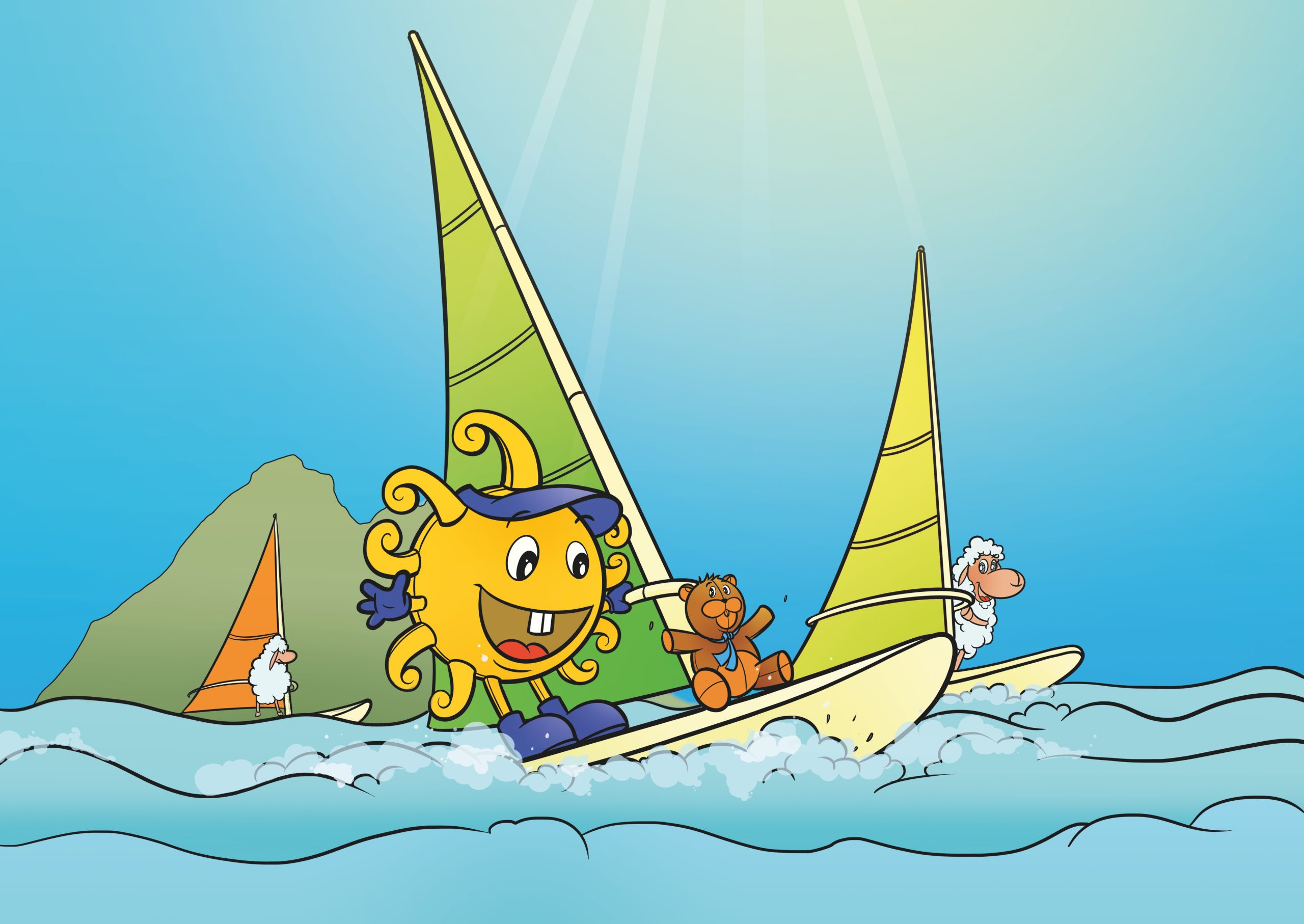
Holidays are the perfect opportunity to enjoy a wide range of sporting activities. San Teodoro offers the chance to practise your favourite sport or discover new ones, even for beginners. Here are some of the possibilities you’ll find in and around San Teodoro.
Golf
What could be better than spending a day away from the hustle and bustle of the beaches and enjoying the tranquillity of the green? San Teodoro, with the Puntaldia Golf Club, offers you the chance to play in a unique paradise setting, where you’ll enjoy an unforgettable sporting experience on a scenic green stretching along the coast, framed by the turquoise sea and the blue sky.
Horse Riding
Horseback excursions are a fun and pleasant way to spend your free time in contact with nature. It’s hard to describe the unique emotions you feel in the saddle. La Cinta Riding Centre offers the chance to take enchanting horse rides at sunrise and sunset, along the beautiful coastline between beach and lagoon, where you can spot coots, herons, cormorants and pink flamingos.
Mountain Biking
Sardinia, thanks to its climate, landscapes and roads, is the ideal place for road cycling, mountain biking and cycle touring. With unforgettable scenery and breathtaking views, cycling through Sardinia is undoubtedly one of the best ways to enjoy the island. In the San Teodoro area, you can organise excursions to Monte Nieddu to explore the Rio Lu Pitrisconi, with its waterfalls and pools.
Trekking
Sardinia is a large region with only 1.6 million inhabitants. The low population density has helped preserve it. The best way to reach these places is to walk the trails that cross it. The intoxicating scents of the Mediterranean scrub, natural sounds long forgotten by city dwellers, and panoramic views that uniquely blend mountain and marine environments are just a few of the surprises that Sardinia on foot has in store. Many businesses promoting this type of tourism also offer lunch and tastings of local wines and products at various refreshment points. Yet another reason to devote at least one day of your holiday to rediscovering the tastes and scents of Sardinia from a different perspective. Various associations in San Teodoro offer guided excursions to nearby Monte Nieddu and the waterfalls of Rio Lu Pitrisconi. You can also climb the island of Tavolara to reach Punta Cannone (564 metres), where you’ll enjoy an incredible view of the entire coastline.
Kitesurfing and Windsurfing
San Teodoro can be considered the kitesurfing capital of the island, with La Cinta beach becoming a major destination in Europe for the sport. Thanks to the shape of the bay and constant winds, it’s the perfect location to practise, whether you’re experienced or a beginner, with two renowned kite schools available. In recent years, kitesurfing and windsurfing have grown immensely in popularity. If you’re looking for new thrills, let yourself be carried away by the magic of these sports. What’s more, they are entirely eco-friendly activities that everyone can enjoy, even on windy days when the fine, soft sand of the eastern coast becomes an obstacle to relaxation.
Five-a-side Football
San Teodoro has always been a favourite destination for young people. That’s why a five-a-side football pitch worthy of expectations could not be missing. The Puntaldìa resort is a point of reference for anyone who, even on holiday, doesn’t want to give up one of the world’s greatest passions—football. Just a short distance from San Teodoro, you can lace up your boots again and play among green fields and the salty sea air in a truly unique environment.
Tennis
And if your passion is tennis? Don’t worry—there are numerous tennis courts in and around San Teodoro, so there’s no reason to miss out on your training. You can play surrounded by some of the most beautiful landscapes in Sardinia. Whatever your preferred surface, all that’s left is to choose and start playing.
Diving and Snorkelling
The marine protected area off the coast of San Teodoro is one of the most biodiverse zones in the Mediterranean. The richness of marine flora and fauna makes this area one of the best destinations for diving enthusiasts, but also for those wanting to try it for the first time. The seabed offers a variety of crevices, cracks and small caves that serve as natural habitats for a wide range of aquatic organisms. In San Teodoro, there are many well-equipped diving centres ready to help you discover the underwater landscape. In particular, the experience offered by SUNSET DIVE is a must: dive and admire the beauty of the sunset’s colours beneath the sea.
Kayaking and Canoeing
If you’re tired of lounging on a sunbed, why not explore the coastline independently with a quiet, comfortable and eco-friendly vessel? That’s exactly why many tourists choose to spend a day kayaking in crystal-clear waters. Canoeing and kayaking can be enjoyed at any beach in San Teodoro. Thanks to favourable conditions and the coastal exposure, these sports are also perfectly safe for beginners.
Ultralight Flying
Motorised ultralight flying is certainly one of the most exciting and unique activities available in San Teodoro. The airstrip near the large La Cinta lagoon offers the thrill of flying over the beautiful scenery of the islets and islands off the Teodorino coast from 300 metres above. For extreme sports lovers, the San Teodoro airstrip also offers parachuting courses run by professionals during the summer months—an adrenaline-pumping experience!
Go-Karting
Ideal for those looking for safe fun, go-karting adds excitement to your day with a thrilling race to the last bend, competing with friends and family. Jolly Kart in Agrustos also offers courses for all levels and all ages, where you can learn the best techniques and tricks to become a true racing expert.
Yoga
For many, a holiday is a time of peace and relaxation—a chance to leave behind the stress and worries of everyday life and focus on oneself. If that’s your idea of a perfect break, yoga is an unmissable activity. In and around San Teodoro, you’ll find instructors and classes where you can practise yoga in small groups, immersed in the calming coastal scenery.
Swimming and Gym
If you’re passionate about gym training but worry about missing your workouts during the holidays, rest assured that San Teodoro is a tourist hub equipped to suit every taste. With a large influx of young sports lovers, it’s easy to keep fit and toned even in summer, thanks to the many gyms in and around San Teodoro. And if you’re a professional swimmer who prefers calm, clear pool water to sea currents, Olbia’s Geovillage will amaze you with its 50-metre outdoor Olympic pool with 10 lanes, and a sports centre where you can work out in a fully equipped fitness room.
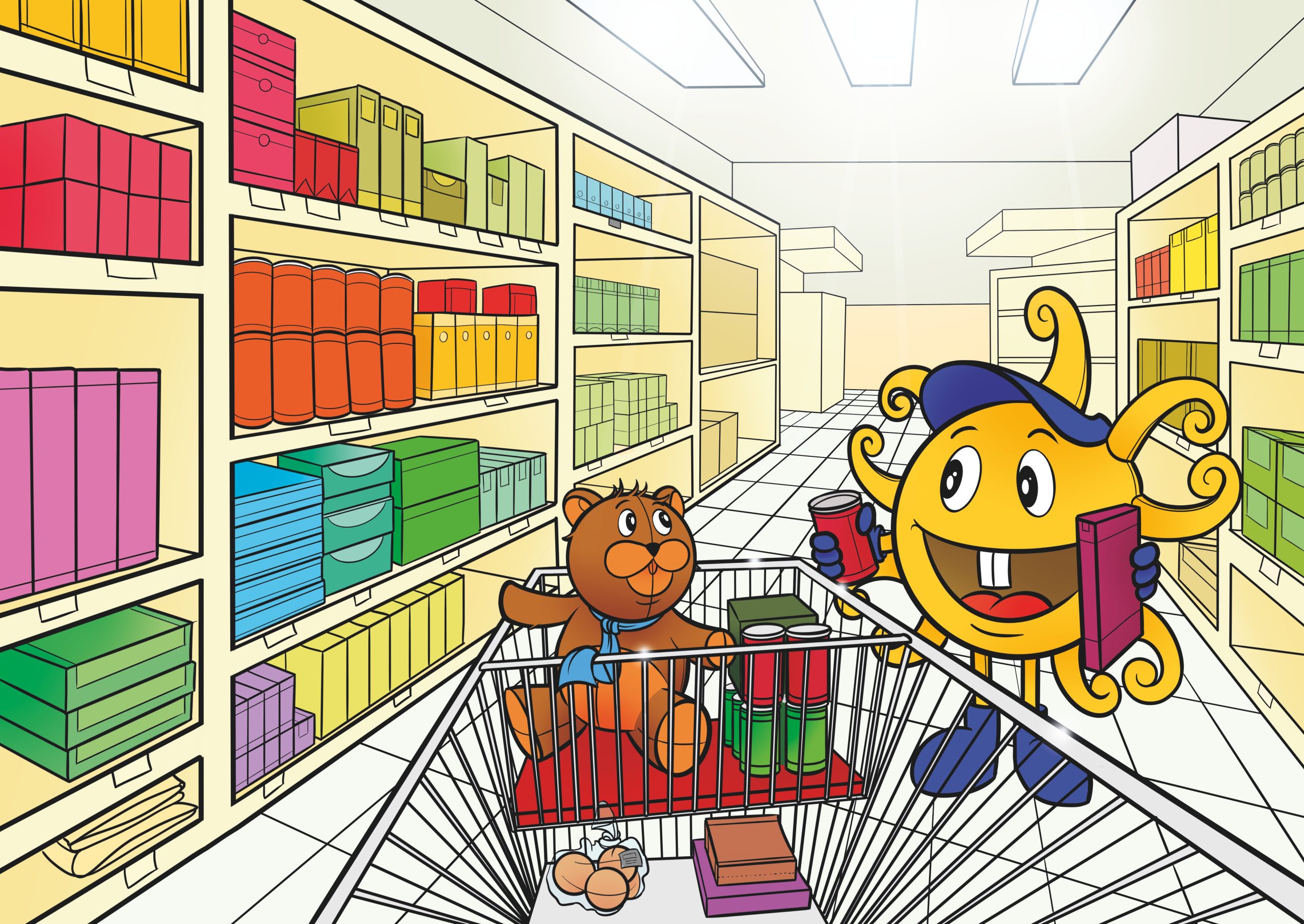
The territory of San Teodoro occupies the far southeastern part of Gallura, historically known as Gallura d’Oviddè. San Teodoro, located just 25 minutes by car from Olbia, is one of the most popular destinations in Sardinia, not only for its heavenly beaches and vibrant nightlife, but also for its stunning natural setting, such as the lagoon – ideal for observing rich birdlife – or Monte Nieddu, a wild mountain carved by deep and solitary valleys where waters form small lakes and picturesque waterfalls. From the summit, you can enjoy breathtaking views. In some areas, the town has preserved its original appearance with the typical Gallurese houses. From the historic centre gathered around Piazza Gallura (a must-stop thanks to its artisan shops), residential developments have expanded towards the sea, which remains San Teodoro’s main attraction – though certainly not the only one.
The centre
The centre of the seaside village of San Teodoro, lively and bustling in the summer season, retains the typical pace of a village during winter and has been selected along with two other Sardinian towns to take part in the prestigious Rai TV show “Il Borgo Dei Borghi”, which elects the most beautiful village in Italy. San Teodoro, which enjoys an enviable climate from May to October, is suitable for all ages and offers various entertainment options. You can choose from family-friendly entertainment, nightspots for young people, excursions, and a wide range of food and wine options – from street food to a variety of restaurants. Every day offers an abundance of choices, allowing you to spend each evening differently – or simply enjoy a walk through the famous night market.
From our residence, you can easily reach the centre by turning left and continuing straight along Via Li Fureddi, which leads to the junction with Via Sardegna, opposite “Il Giardinaccio”. From here the centre is 300 metres away – turn left and continue straight after crossing the bridge. We recommend going on foot; it’s a pleasant 15-minute walk. This suggestion is especially useful due to the difficulty of finding parking spaces in the evening hours. If you do decide to use the car, be aware that blue-lined parking spaces are paid until late at night. Moreover, the area marked in yellow on the map becomes a ZTL (limited traffic zone) in the evening, with vehicle circulation prohibited from 8:00 PM. This is due to the market lining the streets, with its lights and colours – now an institution for two decades and a defining feature of San Teodoro. Here you’ll find a wide variety of products, from local crafts to ethnic artefacts and typical Sardinian sweets. The commercial offering is also complemented by several shops, which remain open until 11:00 PM.
Just a short walk from the residence
Our residence is located 900 metres from Via Sardegna, San Teodoro’s main street, where you’ll find various services.
Eurospin: a discount supermarket offering a wide range of quality products at affordable prices. It has also recently expanded its range to include local products at very competitive prices. Located on Via Sardegna, 900 metres from our residence, just before the bridge leading to the centre of San Teodoro. To reach it, take Via La Canna (turn left when leaving our residence). The road may seem blocked due to construction works, but you can continue by turning right. Follow the road all the way, and you’ll arrive at Via Sardegna, with Eurospin on your left.
Pescheria Spano: offers very fresh fish and a Fry Shop where you can order mixed fried seafood and vegetable fritters. Located at Via Sardegna 31. To reach it, take Via La Canna (turn left from our residence). Follow the road to the end to reach Via Sardegna, turn right, and the fish shop will be on your left.
Il Panificio di San Teodoro: if you fancy some fresh bread, you can buy it here along with other baked goods: focaccia, mini pizzas, croissants and typical sweets. To reach it, take Via La Canna until you get to the main Via Sardegna, turn left, and just before the bridge you’ll find the bakery on your right.
By car
Dettori Market: a medium-sized supermarket with butcher, deli, and bakery. Located on the SP125, from Via Li Fureddi turn right at the junction and it’s 50 metres ahead.
Shopping Centres: if you’re looking for a hypermarket, in the nearby city of Olbia you can choose between the Olbia Mare Shopping Centre, next to the airport, or the Terranova Shopping Centre, on the outskirts of Olbia towards the Costa Smeralda.
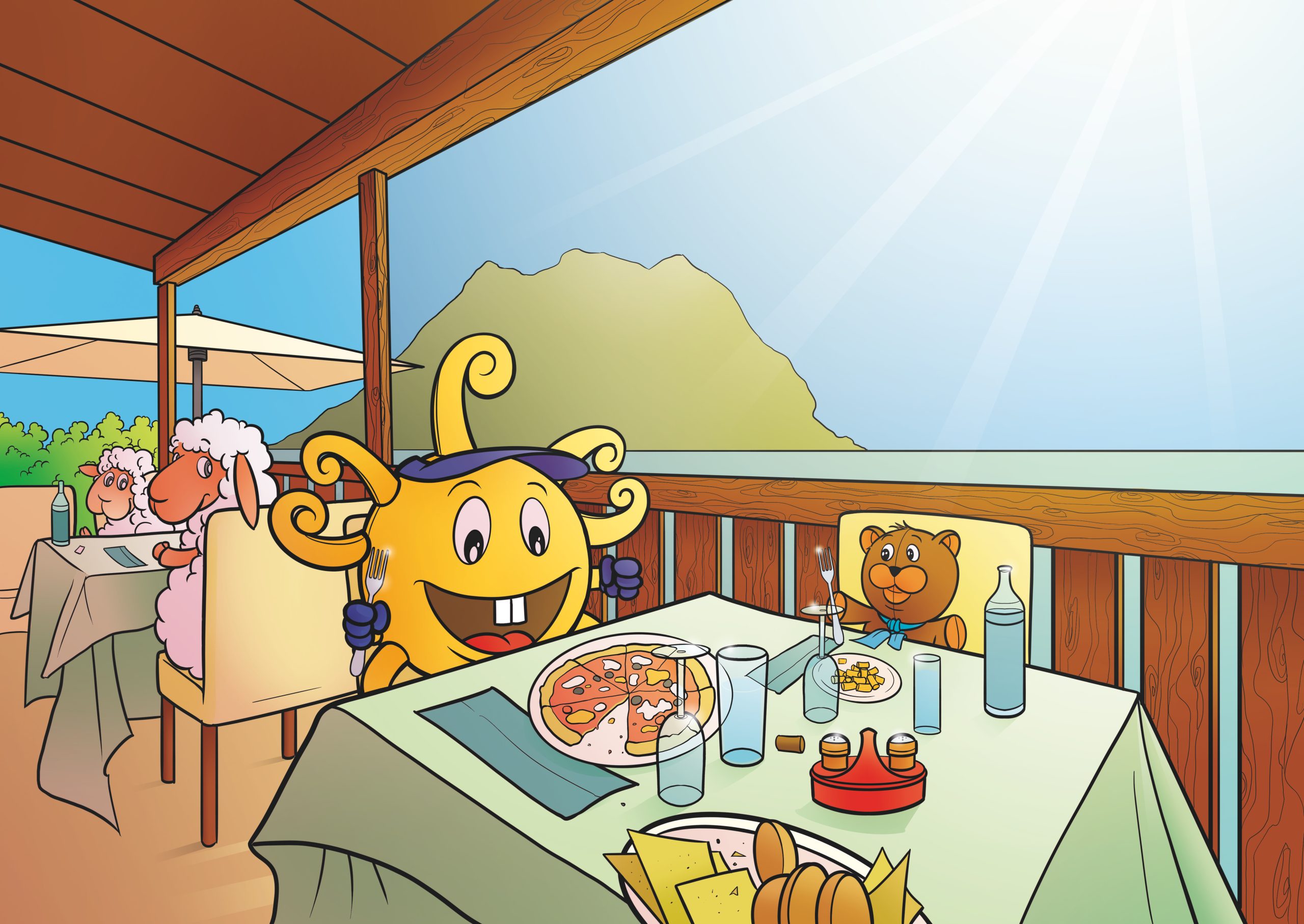
In the San Teodoro area, you’ll be spoilt for choice when it comes to spending your summer evenings relaxing or having fun. Eating in San Teodoro means tasting the true flavours of Sardinian cuisine in all its essence. All the restaurants in San Teodoro offer a mix of traditional cuisine, Mediterranean dishes with excellent fresh fish and local meat, while also catering for vegan and vegetarian diets.
Restaurants
Il Giardinaccio
Just 900 metres from our residence, this is the number one restaurant in San Teodoro for the quality of its offerings and the professionalism of its staff. You can choose to dine outdoors on the covered veranda or inside. The ingredients are top-quality – both fish and meat are extremely fresh, and the pizza is also very good. Il Giardinaccio is open for both lunch (except Sundays in June) and dinner. Due to high demand, it is advisable to book at least one day in advance.
Phone Number: +39 0784 865678
Da Nardino
A historic restaurant in San Teodoro, located in the pedestrian area. From our residence, walk along Via La Canna until you reach Via Sardegna, turn left, cross the bridge and continue straight through the pedestrian zone until you reach the central square with the church. Leave it behind you and proceed straight along Via Emilio Lussu; at the end of the street, turn right into Via S. Francesco – Da Nardino will be on your left, just 200 metres away. It offers Mediterranean-inspired cuisine and boasts an extensive wine list, featuring the best crus from Gallura as well as top Sardinian labels. The menu is always current, with high-quality ingredients and traditional dishes. Nardino is open for both lunch and dinner; booking is recommended.
Phone Number: +39 0784 865235
L’Artista
The second restaurant we recommend is on Via del Tirreno, 2 minutes from the centre of San Teodoro. Once in the centre, cross the church square (Piazza Gallura), turn left onto Via del Tirreno and continue for 200 metres; the restaurant is on the right. The atmosphere is pleasant, and the menu focuses on high-quality ingredients. It also features an aquarium where you can choose your own shellfish. The staff are extremely friendly and offer attentive service at fair prices. Open for both lunch and dinner.
Phone Number: +39 0784 869056
Ice Cream Parlours
Is it a hot summer day, or are you simply craving something sweet? Here’s where to enjoy a refreshing ice cream at San Teodoro’s best gelaterie.
Il Buon Gelato
Just a stone’s throw from the town buzz, this ice cream parlour welcomes visitors into an intimate space rich with tempting offerings. The variety of flavours caters to all tastes, with highlights such as tiramisu and orange blossom ice cream – true stars of an authentic experience. Don’t miss the cannoli either.
Ice Paradise
Located on Via degli Asfodeli, a few steps from the church. Every day in its on-site lab, they prepare truly wholesome ice cream made with fresh, high-quality natural ingredients. Milkshakes for all tastes, as well as granite and fruit ice lollies.
BM&V
Located on Via San Francesco D’Assisi. An artisan ice cream parlour using fresh, high-quality ingredients. Perfect for enjoying a cone during a walk in the centre!
Aperitif Venues
In San Teodoro, leisure opportunities abound, all centred around relaxation and the joy of good company. There are cosy venues where you can sip a cocktail outdoors, immersed in a calm and pleasant atmosphere – ideal for an evening with friends. For lovers of live music, there are plenty of spots where you can let yourself be carried away by the tunes in a sociable and relaxed setting. Whatever your choice, the common theme is always wellbeing and the pleasure of enjoying the moment.
Bal Harbour
A renowned restaurant and Lounge Bar, it overlooks San Teodoro’s marina. It features a large outdoor space with a swimming pool and garden, two outdoor bars, and a spacious, elegantly furnished indoor area. During the day, the Bal Harbour pool is equipped with sun loungers; you can order a cocktail or a small brunch prepared by the restaurant’s Chef. In the evening, you can enjoy grilled Brazilian meat from the Churrascaria, sushi, and cocktails served in a charming setting. Every week, Bal Harbour hosts pool parties, poolside aperitifs, and themed events.
Buddha Del Mar
Buddha del Mar is a venue offering a range of services including restaurant, bar, cocktail bar, dance and lounge club. A place to enjoy great cocktails with friends and listen to good music – but also to meet new people. A hotspot among young people for its nightlife, perfect as a pre-club venue. Buddha del Mar also offers dinner shows, live music, and the ever-popular DJ sets.
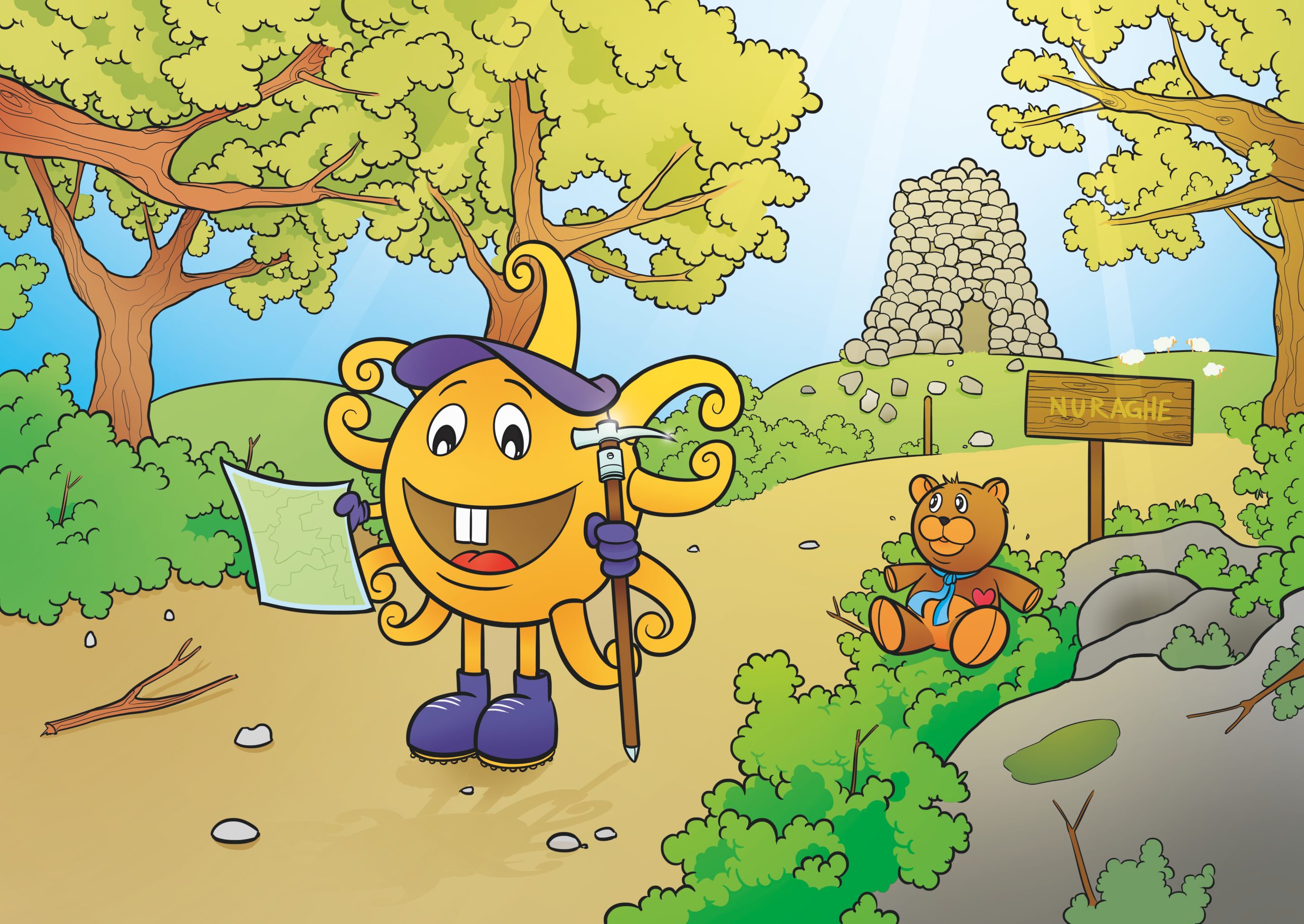
Extended Area Excursions
Every day you’ll find a different excursion on offer: from exploring archaeological sites inland to boat trips around the archipelago – you’ll be spoilt for choice. Depart directly from our residence to discover nearby destinations or others just an hour’s drive away, and make the most of your SardegnaSummer holiday.
Monte Nieddu
San Teodoro is an excellent starting point for this kind of journey, so even those visiting Sardinia for the first time will be able to experience the charm of the area. Not by chance, right behind the town centre rises a large mountain – Monte Nieddu, whose summit reaches 970 metres. It’s a dream destination for trekking or mountain biking enthusiasts, as the breathtaking views from the top are a worthy reward for the effort it takes to get there. “Nieddu”, in Sardinian, means “black”, a name given due to the dense vegetation that still covers the mountain today: cork oaks, holm oak forests, oleanders and centuries-old junipers, together with its unique fauna – including wild boar, imperial ravens, peregrine falcons, and golden eagles – create a truly marvellous setting. The routes are also suitable for families with children, who can easily reach Vedetta Palemonti, and then continue on to the Rio Pitrisconi waterfalls. The mountain was also the setting for a significant episode in Sardinian history: in the 19th century, groups of charcoal burners arrived to produce charcoal, building paths and roads to transport the material from the mountain to the beaches of San Teodoro.
How to get to Monte Nieddu from our residence:
Leaving the residence behind you, turn right onto Via La Canna and then left until you reach the junction that brings you to the SS125 Orientale Sarda. Turn right and, at the roundabout, take the second exit, remaining on the SS125. Continue for about 600 metres. Once you reach the hamlet of Budditogliu, turn right onto Via Aresula and after 400 metres take the first road on the left. Continue for about 850 metres until you reach the car park.
Nuraghe Naracheddu and Nuraghe Lu Naracu
In the area of San Teodoro, traces and artefacts from prehistoric times have been found, dating back to both the pre-Nuragic and Nuragic periods. The most significant case is that of the nuraghe (called naracu in Gallurese) located in the hamlet of Naracheddu, currently only a few rows of stones remain, but according to archaeological surveys, up until the 1940s it stood in excellent condition, reaching a height of seven metres. Also worth noting is the small nuraghe at Tanca Lu Naracu, located at the border between Budoni and San Teodoro, positioned high up along the coast, likely serving a watchtower function.
Roman Presence
The Itinerarium Antoninianum, a 3rd-century A.D. document, confirms the existence of a settlement in the area dating back to the Roman era. The locality, known as Coclearia – a name not mentioned outside of the Itinerarium – is likely located near today’s San Teodoro. This hypothesis is supported by the discovery of two Roman milestones (albeit uninscribed) in the hamlets of L’Alzoni and Budditogliu. Roman presence is also confirmed by numerous archaeological findings, now on display at the local Museo del Mare.
Within an Hour’s Drive
The Maddalena Archipelago
In the stretch of sea between Sardinia and Corsica, known as the Bocche di Bonifacio, lies a galaxy of islands and islets surrounded by turquoise waters: one of the world’s most spectacular landscapes, protected for its environmental value. Established in 1994 as the first in Sardinia, the Maddalena Archipelago National Park covers more than 20,000 hectares of land and sea. It includes 180 km of coastline and more than 60 islands – large and small – sculpted by wind and current. Among the most famous: Budelli, Caprera, Razzoli, Santa Maria, Santo Stefano, and Spargi. The park is part of the European network of areas of environmental excellence and is strictly protected: boating, fishing, and diving are permitted but must be authorised. It’s a landscape of remarkable shapes and rich flora – with nearly 1,000 plant species, around 50 of them endemic. One standout species is the pinna nobilis, the largest bivalve mollusc in the Mediterranean. The bottlenose dolphin is the most common cetacean here, and you may even spot groups of up to 30. Also frequently seen in the park is the loggerhead turtle (caretta caretta). Among birds, the Audouin’s gull and the European shag are most often spotted.
Beyond the settlement of Stagnali on Caprera – home to centres for environmental education, cetacean research, and the mineralogical and maritime museums – the archipelago’s only inhabited town is La Maddalena, founded in 1770 and long a naval base, now commemorated by the Nino Lamboglia Museum. Among its crystal-clear beaches with fine sand, don’t miss Bassa Trinità, Cala Francese, Cala Lunga, Monti d’à Rena, Punta Tegge, and Spalmatore. Caprera is connected to La Maddalena by a bridge. The island features beautiful little beaches such as Cala Brigantina, Cala Caprese, Cala Garibaldi, Cala Serena, and Cala Napoletana. The most famous, however, is Cala Coticcio – one of the most stunning beaches in the entire Maddalena Archipelago, nicknamed Tahiti for its brilliant colours.
Ferries depart daily from Palau. The average cost is around €20 for a car and two people. Once there, you can visit the town, beaches, and Garibaldi’s House. There are two main options for exploring the islands by boat: an organised tour or rubber dinghy hire. Full-day tours include stops at: Cala Corsara Beach on Isola di Spargi, Santa Maria Beach at La Maddalena, the Pink Beach on Isola di Budelli, and a visit to the historic centre of La Maddalena. These are usually on boats carrying over 50 people. Alternatively, there are smaller group tours using dinghies that carry up to 12 people.
Nuraghe Losa
Just one hour and twenty minutes by car along the SS131 dual carriageway will bring you to one of the most famous, well-preserved and representative megalithic testimonies of the Nuragic civilisation. The original name, nurache ‘e losas, means “nuraghe of the tombs” and refers to the Roman funerary urns carved into the exposed rock at the edge of the site. The unmistakable silhouette of Nuraghe Losa rises from the basalt plateau of Abbasanta, 5 km from the small town in the Oristano area. It is one of the most striking and distinctive examples of Nuragic architecture, the subject of archaeological excavations since the 19th century, and stands out for its organic design and refined masonry techniques. Surrounding it are the remains of an extensive settlement. The complex, entirely built with large basalt blocks, consists of a trilobed nuraghe dating back to the Middle Bronze Age (15th–14th century BC), an outer wall, and remains of a village of circular huts, built between the Recent Bronze Age and the Iron Age (13th–9th century BC). The main entrance leads to the truncated conical central tower (keep) and the two side towers. The rear tower is accessible from a secondary entrance. Beyond the high threshold, you’ll find three passageways leading to three tholos-roofed chambers (false domes). The keep features a classic layout: a large ground-floor chamber with three cross-shaped niches. A spiral ramp leads to the small upper chamber and once reached the top. Around the central tower are three smaller towers with high, narrow rooms, interconnected by masonry that encircles the entire structure. Inside are also three small wells, probably used as storage for food reserves or other materials. At the base of the western turret is a cistern. Of the vast settlement that once surrounded it—covering three and a half hectares—only a small part has been excavated. In various areas, you’ll observe remains of Nuragic dwellings and, notably, houses from the late Punic, Republican and Imperial Roman periods, as well as from late Roman and Byzantine times. At a distance from the residential site stood funerary and religious monuments: 120 metres southwest of the wall, you can admire a Giants’ Tomb built with perfectly cut blocks, mostly dismantled over the millennia.
How to get there from our residence
Leaving the residence behind you, turn right onto Via la Canna, then left until the junction that brings you back onto the SS125 Orientale Sarda. At this point, turn left and at the roundabout, take the first exit to join the SS131 dual carriageway towards Nuoro. Continue for 126 km. At the fork just after Abbasanta, you’ll find the entrance to the Nuragic complex on the left.
Sos Nuratolos Nuragic Complex, Alà dei Sardi
The Nuragic Complex of Sos Nuratolos is located in the municipality of Alà dei Sardi, in the province of Sassari. Dating back between 1600 and 900 BC, it shares architectural elements with the Nuragic site of Su Romanzesu: a sacred spring, a small megaron temple, and several huts. The sacred spring, situated within an irregularly shaped circular courtyard, is accessed via a side stairway. Also within the courtyard is a circular stone hut, probably a service room used for cultic activities where pilgrims purified themselves before continuing their journey. The second structure is the megaron temple. Positioned at the summit, the temple has a rectangular plan and tall protruding walls both at the front and rear. The small temple is surrounded by an elliptical enclosure (possibly used to pen sacrificial animals or consult oracles), inside which stands a stone structure composed of two adjoining circular chambers, possibly symbolising the divine pair Sun-Moon during a partial solar eclipse.
How to get there from our residence
Leaving the residence behind you, turn right onto Via la Canna, then left until the junction that brings you back onto the SS125 Orientale Sarda. From here, turn right and continue straight until you turn left onto the SS110 towards Padru. Enter the village of Alà dei Sardi, turn onto Via Cagliari, and then continue along Via San Francesco until you reach the destination.
Ludurru Domus de Janas Necropolis and Nuraghe Loelle, Buddusò
About 50 km from San Teodoro lies the municipality of Buddusò. This town is the source of the Tirso River, the longest in Sardinia, named after the ancient settlement Caput Thyrsi, an important Roman hub and passage between Olbia and Ozieri. The town is also known for its granite production, which became a key economic resource during the post-war boom. Granite from its quarries has been used in important architectural works worldwide. Inhabited since prehistoric times, its most significant evidence comes from the Domus de Janas of Ludurru—prehistoric burial structures carved into the rock. Around 2,400 of these have been discovered in Sardinia, sometimes isolated or grouped in concentrations of more than 40 tombs. They often form underground necropolises, connected by a shared access corridor (dromos) and an antechamber, often spacious and with high ceilings. Their shapes vary—round hut-style with conical roofs or rectangular with sloped roofs, often with doors and windows. The walls were frequently painted with red ochre and decorated with stylised bull horn symbols. In burials, the bodies were placed in a foetal position, accompanied by personal items and food for the journey to the afterlife. Legends passed down orally describe the Domus de Janas as “fairy houses”. The janas were said to be wealthy beings skilled in weaving fine brocades. Also in the Buddusò area is the Nuraghe Loelle. Nuraghi are Bronze Age towers, typically single-towered structures with one or more internal circular chambers and smaller side areas such as niches, storage rooms or silos. Unique to Sardinia, around 7,000 nuraghi are known, though there may have been many more. They were always built in dominant positions, like Nuraghe Loelle, which stands at about 794 metres above sea level. Of mixed type, it features both corridor and tholos elements. It comprises a central tower flanked by a trilobed bastion. Around the nuraghe lies a village of huts and, nearby, a dolmen and two Giants’ Tombs.
How to get there from our residence
Leaving the residence behind you, turn right onto Via la Canna, then left until the junction with the SS125 Orientale Sarda. Turn right and continue straight until turning left onto the SS110 to Padru. After passing the village of Alà dei Sardi, reach Buddusò. From the town centre, follow road signs and take the SS389—on your left is the entrance to the Nuragic complex. Continuing on the SS389, a few kilometres further, you’ll reach Su Romanzesu.
Su Romanzesu in Bitti
The Nuragic complex of Romanzesu is located in the cork forest of the granite plateau of Sa Serra, about 13 km from the municipality of Bitti. It is a Nuragic village dating back to the Bronze Age that includes a sacred well, two megaron temples, an elliptical stepped amphitheatre and a hundred or so huts. The sacred well has a tholos structure with a circular layout. It is believed to have been a temple where ceremonies related to water worship were held. It is in fact connected to the amphitheatre by a 42-metre-long stepped gully that carried water from the spring to the amphitheatre. The amphitheatre is a large circular pool on a difference in height of 1.60 metres that collected the water from the well when it rose above the level of the steps. It is surrounded by six tiered tribunes, on which the people of the village probably gathered. Two megaron temples have also been found in the Nuragic complex, with an elongated rectangular shape and a vestibule preceding the cella. The village huts, on the other hand, have a circular layout and a paved floor. Some of them are large in size and one is distinguished by the presence of an internal dividing wall. Ceramic artefacts dating back to the Middle Bronze Age (16th century B.C.) were found at the huts.
How to get from our residence?
Leaving the residence behind, turn right onto Via la Canna and then left until you reach the crossroads that take you back onto the SS125 Orientale Sarda. At this point, turn left and at the roundabout, take the first exit onto the SS131 motorway, direction Nuoro. Continue for 52 km, until you reach the junction for Lula-Bitti, where you will exit, continuing on the SS73. After passing through the town centre of Bitti, take the SS389 and continue following the signs for the archaeological site.
Oliena
Oliena is the founding village of Cortes Apertas, the food, wine, and arts festival that takes place every autumn in various towns in the province of Nuoro. This rich event winds through the streets of the village, where traditional crafts—such as wool, wood, iron, and milk processing—are showcased in the courtyards of historic homes. Alongside these demonstrations, there are also rich artistic exhibitions by goldsmiths, tailors, and ceramicists.
Oliena is also known for its karstic caves located in the Lanaittu Valley, one of the most spectacular natural environments in Sardinia: Sa Oche and Su Bentu, and the Corbeddu Cave. The cave of Sa Oche and Su Bentu, filled with stalactites and stalagmites, hosts several natural pools and is full of dark chambers and quartz beaches. The second cave, Corbeddu, just a few hundred meters away, is divided into three rooms. Important finds were made here, especially human remains dating back around 20,000 years, which are the oldest evidence of Homo sapiens in Sardinia. Bone and stone tools were also discovered. In addition to human remains, bones of now-extinct animals were found in the cave, such as the Prolagus sardus, a mammal similar to a large rabbit.
Also located in the Lanaittu Valley is the nuragic village of Sa Sedda ‘e Sos Carros, particularly important for traces of metalworking and smelting activities from the Nuragic era. It consists of numerous huts with circular and oval layouts. One hut is especially notable for its unique architecture and ritual function: it is a circular room with interior walls made of two-colored, squared blocks—white limestone and dark basalt. On its walls are carved mouflon heads in high relief, each with a hole through which water could gush into a circular monolithic basin on the floor. Near this hut is a large stepped circular structure used as a basin for ceremonial ablutions. Over time, this structure changed its original use and became a storage place for bronze items, suggesting the presence of a nearby foundry.
Oliena’s rich natural landscape continues with Su Gologone, the main karst spring in Sardinia. A stream flows from it and feeds the Cedrino River. Water emerges from a crack in the limestone rock that descends to a currently explored depth of 135 meters, making it the most important spring in Sardinia, with an average flow of 500 liters per second.
For extreme trekking and climbing enthusiasts, there is Badde Pentumas, a spectacular canyon up to 150 meters deep. Also within the territory of Oliena, at the border with Dorgali, lies Tiscali, a fusion of two of Sardinia’s defining features: karst phenomena and archaeological remains. Tiscali is a karstic sinkhole, formed by tectonic collapse in the heart of Mount Tiscali. Inside are the ruins of a nuragic village built using techniques different from other contemporary sites. Possibly dating back to before the Bronze Age, the village is built along the walls of the sinkhole and includes about 70 huts. In the first cluster, the circular huts likely stood on artificial terraces. The second village has rectangular structures used as storage rooms and animal shelters. Another unique aspect of the village is the micro-ecosystem, which has allowed the development of endemic flora found only within it.
Gorropu Gorge
The Gorropu Gorge is a deep canyon located in the Supramonte area, marking the border between the municipalities of Orgosolo and Urzulei. The gorge was formed by the intense erosive action of the waters of the Rio Flumineddu, which flows at the bottom. The Gorropu Gorge is considered the deepest canyon in Italy and one of the deepest in Europe. It is characterized by strong temperature fluctuations due to areas that are either poorly exposed to sunlight or completely shaded. This creates a natural habitat that hosts several Sardinian endemic species, including aquilegia nuragica, a rare plant with purple flowers. The gorge is also home to Mediterranean scrub plants such as fillirea and the millenary yew. At the bottom of the gorge, before entering, the waters of the Rio Flumineddu emerge from the rocks and create natural water basins where the Sardinian trout and, most notably, the Sardinian-Corsican euprocto can be found: an endemic species considered the rarest amphibian in Europe. As for fauna, you can find the biscia dal collare (collared snake), martens, Sardinian hares, foxes, wild boars, and above all, the golden eagle and the mouflon.
The Territory of Dorgali
In the neighboring territory of Dorgali, a visit to the Ispinigoli Cave is a must, due to its exciting and suggestive descent underground. After descending 280 steps, you will reach a chamber with a diameter of 80 meters, where a 38-meter-high column rises—one of the most impressive in Europe. The cave offers an exceptional environment in every detail. Some paths, like the so-called “abyss of virgins,” can only be undertaken by expert spelunkers. Specifically, this is a narrow channel 60 meters deep, extending for about 12 km, connecting to the San Giovanni su Anzu Cave. In practice, Ispinigoli is the visitable part of an enormous karstic system with branches and underground streams. Inside, Nuragic, Punic, and Roman relics have been found, testifying to its long use as a burial and religious site. The discovery of small human remains, rings, jewelry, and solar symbols suggests a Phoenician sacrificial well. During the World Wars, Ispinigoli was a refuge, and until the mid-20th century, it was used by shepherds as a shelter for their flocks. Near the cave, there is a hot spring where you can bathe, as well as a renowned restaurant where you can taste traditional Sardinian cuisine. After crossing the town of Dorgali and passing through the gallery, a magnificent view of the Gulf will unfold before you. Leaving behind the wooded Supramonte, you will reach the famous location of Cala Gonone. From here, via short mini-cruises and boat trips or trekking routes, you can reach some of the most beautiful bays in Sardinia, including Cala Luna. You will also discover unique natural monuments, such as the majestic Bue Marino Cave, named after the monk seal. The marine cavities extend for a total of 15 km, divided into two main branches. In the large gallery, sea water enters, and numerous freshwater pools fed by underground rivers emerge. The tourist route, among stalactites and stalagmites, offers an extraordinary spectacle thanks to beams of light that penetrate the interior. The cave is also famous for its Neolithic rock engravings, depicting a human circle around a presumed representation of the sun. The walk ends at the seal beach, where monk seals once gathered to mate and give birth. The visit, guided by expert guides, lasts about one hour. Cala Luna is the most famous beach in the Gulf of Orosei. It became known as a film location in the 1980s. The beach can be reached on foot in two hours via the path that starts from Fuili, or by sea through boat and dinghy services departing from the Cala Gonone port. Cala Sisine is the beach found south of Cala Luna, located at the foot of Monte Plumare, whose cliff rising straight from the water exceeds 400 meters. Cala Sisine is the outlet to the sea of the homonymous river, which, during the summer, retreats, leaving its dry bed for bathers. A small bar-restaurant is located there, and the beach can be reached on foot in three hours from Cala Luna or in one hour via the canyon behind the beach. Cala Biriola (or Billaricoro Beach) lies on the slopes of the eponymous forest of oaks and junipers, whose green reflections mix with those of the water. The mountain behind rises above 600 meters. The cove is well sunlit all day until mid-August. There are no beach services except environmental surveillance managed by the municipality of Baunei. It is particularly appreciated for diving, snorkeling, and its rich fish fauna. The Venus Pools are located in the “Su Feilau” area. In alternate years, depending on the storms, there is a small beach, but it’s better not to stop here due to the overhanging cliffs that may cause rocky material to fall. Cala Mariolu is considered by many to be the jewel of the Gulf of Orosei. The original name is Is Puligi de Nie, meaning “snow fleas”, referring to the small pebbles that make up the beach. It can be reached by sea or by following a challenging path. A kiosk is present on the beach during July and August, along with a diving service (even for first-time divers). Cala Goloritzè is the last beach before Capo di Monte Santo, which marks the end of the Gulf of Orosei. Goloritzè is one of the most sought-after destinations for rock climbing enthusiasts due to the presence of Punta Caroddi, a 140-meter-high limestone pinnacle. Pinnacles and spires rise dramatically around the beach, creating a unique landscape. Beach access is only permitted on foot due to strict regulations protecting this small paradise.
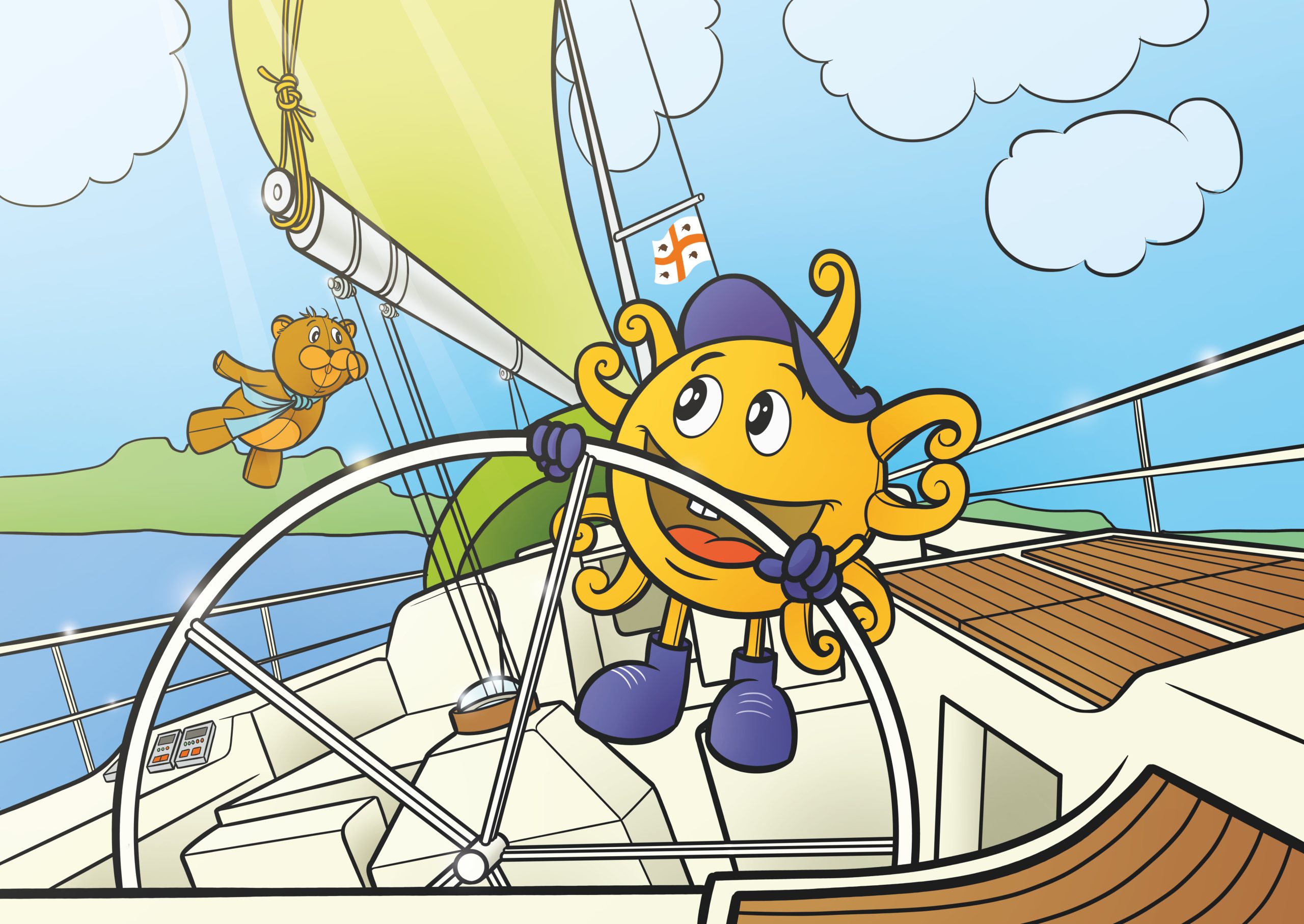
Sardinia is notoriously a windy land. Even San Teodoro with its wide beaches is exposed to the winds of Ponente and Maestrale. The Grecale (from North-East) and Levante (from East) are also bothersome as they create waves that make navigation difficult. However, some beaches remain more sheltered, allowing you to spend the day without the annoyance of sand gusts or the danger of an umbrella flying away. Here are our tips!
Cala Brandinchi
Completely sheltered to the North by the promontory of Capo Coda Cavallo against the strong Maestrale wind.
Cala Girgolu
Located at the foot of Montipitròsu, it is sheltered from the Ponente wind blowing from the West, and its shape, aided by the two islands of Molara and Tavolara, protects it from strong currents.
Cala Suaraccia
The cove is not very large, but when the Maestrale blows on the promontory of Capo Coda Cavallo, this is a truly sheltered beach. It is ideal on days with scirocco, libeccio, and maestrale winds.
Puntaldìa
Located to the north of La Cinta beach, it is in a sheltered position thanks to the homonymous promontory. Other beaches, like Punta Molara and Cala Suaraccia, two small coves located to the north of the promontory of Capo Coda Cavallo, and Baia Salinedda Salina Bamba, to the south of the same promontory, are also protected from the wind.
BEACHES NOT RECOMMENDED ON WINDY DAYS:
La Cinta
Due to its shape, it is exposed to all winds. With strong winds, unpleasant sand gusts occur.
Lu Impostu
The bay lacks the protection of Capo Coda Cavallo like Cala Brandinchi, so it is more exposed to the elements.
L’Isuledda
An extremely exposed beach to currents.
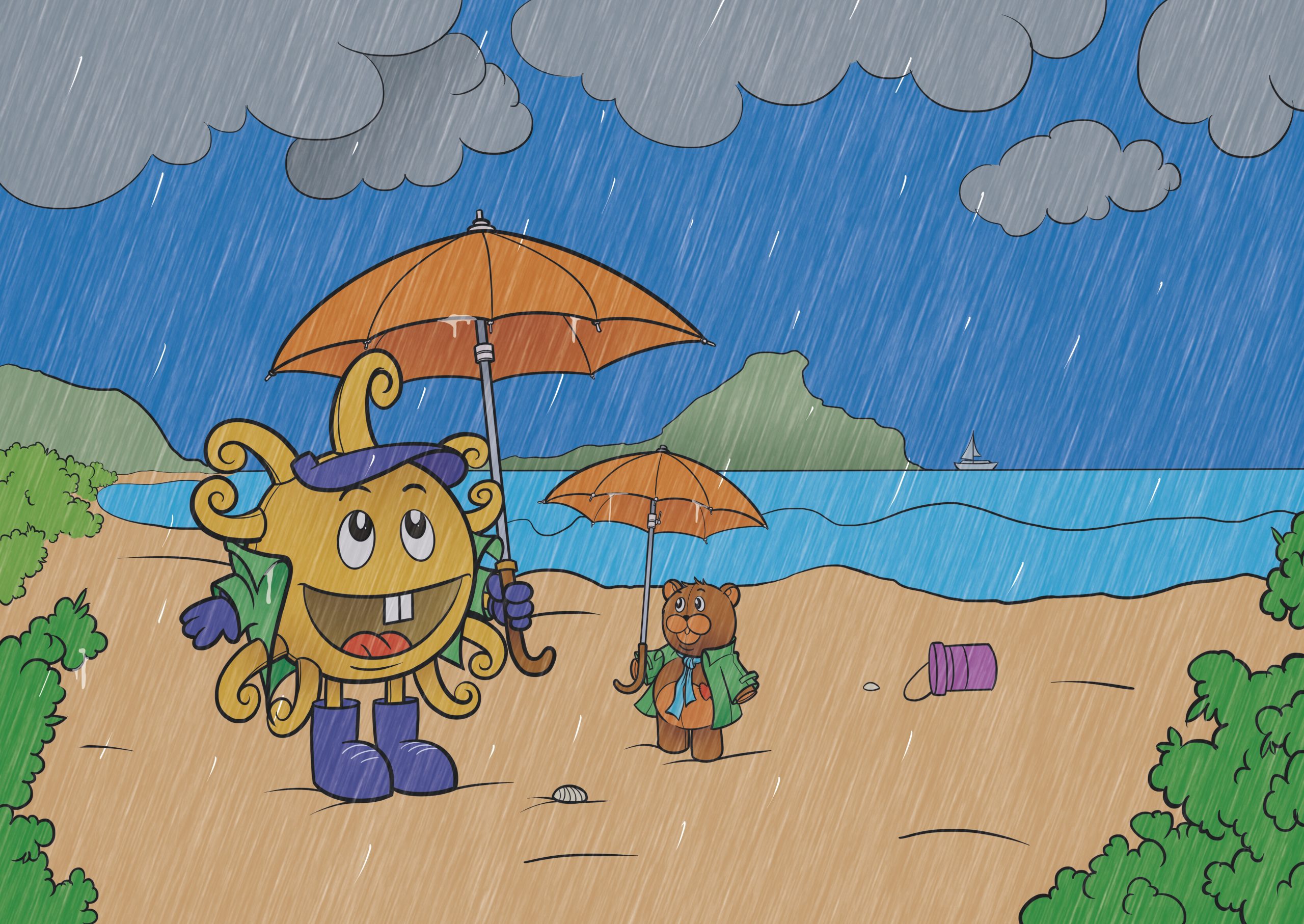
Even a windy or rainy day can become interesting. In Sardinia, there is not just the sea; the alternatives are numerous, and you can dedicate yourself to discovering Sardinian culture, art, and traditions. Here are some ideas designed for you to make even rainy days in San Teodoro and its surroundings unforgettable.
Museo del Mare and Museo dello Stazzo
The exhibition presents archaeological finds discovered in the area of the town of San Teodoro, a place of intense commercial traffic with the cities of the Italian Tyrrhenian coast and the Punic city of Olbia. It features a collection of coins of uncertain origin and Punic origin, while the oldest find is a Campanian Greek-Italian amphora. Color photographic panels illustrate the wreck of the Roman ship from Baia Salinédda (3rd century AD, approximately), from which part of the displayed material comes and which can be the subject of a diving day at one of the authorized Diving centers in San Teodoro. Not far away, in the municipality of Budoni, is the small Museo dello Stazzo, where you can admire the tools used by farmers living in the stazzi, typical rural dwellings of Gallura, some of which can still be found in small country villages today.
Basilica di San Simplicio in Olbia
The Romanesque church of San Simplicio is probably the most important monument in Gallura. Built entirely of granite, it is now incorporated in the heart of the city. The interior has three naves, and in the presbytery, there is the ancient statue of San Simplicio, a fine golden wood sculpture dating back to the 1600s. The archaeological area of the Tempio Necropoli di San Simplicio houses part of the archaeological excavation carried out during the redevelopment works of the space in front of the Basilica of San Simplicio. The excavation, which uncovered about 450 Roman-era graves dating from 200 BC to 300 AD, provides tangible evidence of ancient Olbia.
Parco Archeologico di Arzachena
The park includes several sites, including nuragic complexes, tombs of giants, and necropolises. You can purchase tickets for a single monument or for a complete tour. You will need a car to move around as the sites are spread out across the territory of the municipality of Arzachena. However, the Tomb of the Giants of Coddu Vecchiu and the Prisgiona can also be reached on foot from the main ticket office. The Tomb of the Giants is one of the most spectacular sites: a funerary monument built of granite dating back to 2500 BC. The tomb has remained almost completely intact and is one of the most imposing testimonies of the Nuragic era. Nuraghe la Prisgiona is a nuragic complex consisting of a nuraghe and a village of about a hundred huts. The building consisted of the central keep and two side towers with rooms and niches enclosed by walls, with a well where various artifacts were found. Equally well-known is the Necropolis of Li Muri, a testimony of Gallura’s megalithic culture, and the Tomb of the Giants of Li Lolghi.
The City of Nuoro
The capital of Barbagia, Nuoro is proud to be the birthplace of Grazia Deledda, the first Italian woman to win the Nobel Prize for Literature. Her birthplace in the ancient district of S. Pietro is now a museum. In the town center, there are several museums, including the MAN Museum, with its rich permanent collection of paintings by major 20th-century Sardinian artists, including Antonio Ballero, Giuseppe Biasi, and Mario Delitala. Additionally, throughout the year, the MAN organizes exhibitions related to contemporary art. The Ciusa Museum, located in the former city courthouse, collects the major sculptural works of the master, considered the initiator of modern sculpture on the island. Another must-see in Nuoro is the Museo Etnografico Sardo, the most important ethnographic museum in Sardinia, which, with the Istituto Superiore Regionale Etnografico (ISRE), conducts research across the entire regional territory. The collections include about 8,000 artifacts, mainly clothing, jewelry, textile and wooden artifacts, weapons, masks, bread, popular music instruments, and domestic and work tools from traditional Sardinia, mostly dating from the late 1800s to the first fifty years of the 1900s. The Museo Archeologico Nazionale G. Asproni, inaugurated in 2002, is located in the 19th-century building that belonged to Giorgio Asproni, a 19th-century intellectual and politician. The exhibition offers an intense testimony of the rich paleontological and archaeological heritage of the Nuoro province: from vertebrate finds from Monte Tuttavista and Grotta Corbeddu to Paleolithic finds from Ottana and a collection of Neolithic everyday life objects. The exhibition path ends with the medieval period and objects from the Castello della Fava in Posada. The Deledda Museum, located on Via Grazia Deledda in Nuoro, is the birthplace of the writer Grazia Deledda, who won the Nobel Prize for Literature in 1926. Deledda lived there from birth until 1900, the year of her marriage. In 1937, the building was declared a national monument, and the museum was opened in 1983.
Mamoiada and the Murals of Orgosolo
In the heart of Barbagia is the village of Mamoiada, known for its carnival, the most famous on the island, during which the masks of the Mamuthones and Issohadores parade. These figures represent opposing roles in a pagan ritual linked to agriculture and the changing of the seasons. The Mamuthones wear a coat made of sheep skins, a black wooden mask, and a series of cowbells on their back, which they ring rhythmically while jumping in an attempt to drive away evil spirits. The Issohadores, dressed in white and red, wear a white mask and the “berritta,” a traditional Barbaricino headdress. They set the rhythm for the Mamuthones and, armed with a rope (soha), try to capture people following the procession as a sign of good fortune. The Museo della Cultura e del Lavoro takes visitors on a journey through the material memory of an ancient society. Videos in the various thematic rooms illustrate how pastoral and farming life was carried out in the village until the mid-20th century. Mamoiada is also a center known for its wine production. The local wineries are worth a visit to taste some of the best local wines. Orgosolo, a small village in Barbagia situated near the picturesque Supramonte plateau and the Montes forest, has become famous for its murals, which have transformed it into an open-air gallery. The first mural was painted in 1969 following a protest by shepherds who opposed the military occupation of part of their land. Since then, more than 200 murals have been painted on the facades of houses throughout the village, evoking historical and political events and taking on a meaning of social protest. A visit to the Silk Worm Museum is also recommended, dedicated to the historical breeding of silkworms, from which the precious thread for weaving lionzu, the yellow saffron headgear of the female Orgolese dress, is obtained. If you visit Orgosolo, don’t miss the Casa-Museo dei Corraine.
Porto Cervo, Shopping, and Architecture
Porto Cervo is the undisputed capital of the Costa Smeralda, the northeastern coastal area, included in the municipalities of Arzachena and Olbia, world-famous for its unspoiled sea and fantastic shorelines. Located on the northern coast, Porto Cervo was founded in 1962 by Prince Karim Aga Khan, who, fascinated by the beauty of these lands, decided to purchase them and develop, along with famous architects Jacques and Savin Couelle and Luigi Vietti, the renowned area that is today a destination for the international jet set. The town’s core was built around the old harbor and the surrounding hillsides. In the ’80s, the new harbor was built, one of the largest and most equipped in the Mediterranean, capable of accommodating any type of vessel, and home to the famous Yacht Club Costa Smeralda. The town center develops around the panoramic terrace of the famous Piazzetta and the Church of Stella Maris. The architecture of the town, in pastel tones, with beautiful villas overlooking the sea, perfectly integrated into the green Mediterranean scrub, recalls the typical style of Gallura and makes Porto Cervo a true postcard panorama. The Church of Stella Maris, designed by architect Michele Busiri Vici in the ’60s, is considered a true masterpiece of modern architecture, with its characteristic cone-shaped bell tower and its simple interiors, enriched by works of art, including the striking painting by El Greco (Domenico Theotocopulos), the “Mater Dolorosa” from the 1500s, the precious pipe organ by the De Martino family, and the two sculptures outside, by Pinuccio Sciola, representing St. Joseph and Pope John Paul II.
San Pantaleo and Its Market
A small gem located in the immediate hinterland of the Costa Smeralda, San Pantaleo is a characteristic village nestled among the mountains of Gallura. Founded in the early 1800s around a country church, San Pantaleo is now a district of Olbia, proudly preserved. A timeless place, it welcomes visitors with the warm hospitality of its inhabitants. The Thursday market is an absolute must-see, drawing numerous visitors to San Pantaleo and showcasing the local treasure of craftsmanship. You will find exclusive creations from local ceramicists, wrought iron artisans, and skilled wood carvers.
Wine Tastings, Vermentino di Gallura
In the village of Berchidda, you can visit the Wine Museum, where, in addition to learning about the history of Sardinian viticulture, the typical grape varieties, and all aspects of this ancient tradition, you can taste excellent white and red wines from all over the island! Every first Sunday in August, the Cantina del Vermentino in Monti hosts a festival dedicated to this wine, with wine tastings, samples of local products, folk shows, and music. The Cantina organizes tastings by reservation throughout the summer. Once there, why not visit the famous country church of San Paolo Eremita? Built in the 12th century, it is set in lush mountains about 13 km from the center of Monti. The Surrau Wineries, between Arzachena and Porto Cervo, with vineyards stretching across sunny valleys caressed by the wind from the Bocche di Bonifacio, offer excellent wine tastings accompanied by platters of cheeses and typical cured meats.
The Nepente of Oliena
If white wine isn’t to your taste, the Cantina Sociale of Oliena, since 1950, has been producing one of the most famous Cannonau wines on the island, with the aim of enhancing it and spreading it worldwide. Oliena, a small town just a few kilometers from the city of Nuoro, lies at the foot of Monte Corrasi, in a territory among the most beautiful in Barbagia, surrounded by valleys, canyons, and limestone peaks with dense vegetation. The vineyards of this area produce a wine with an intense aroma that will be hard to forget. Tastings and visits are possible by reservation at the Cantina Sociale of Oliena and at the Cantina dei F.lli Puddu. “You don’t know the Nepente of Oliena, not even by name? Alas! I’m sure that, if you drank a sip, you would never want to leave the shade of the white cliffs and would choose one of those stone-carved cells, called Domos de Janas by the Sardinians, as your hermitage, to live ecstatically between barrel and flask. I only know it by smell, and the smell alone is enough to intoxicate me.” — G. D’Annunzio

